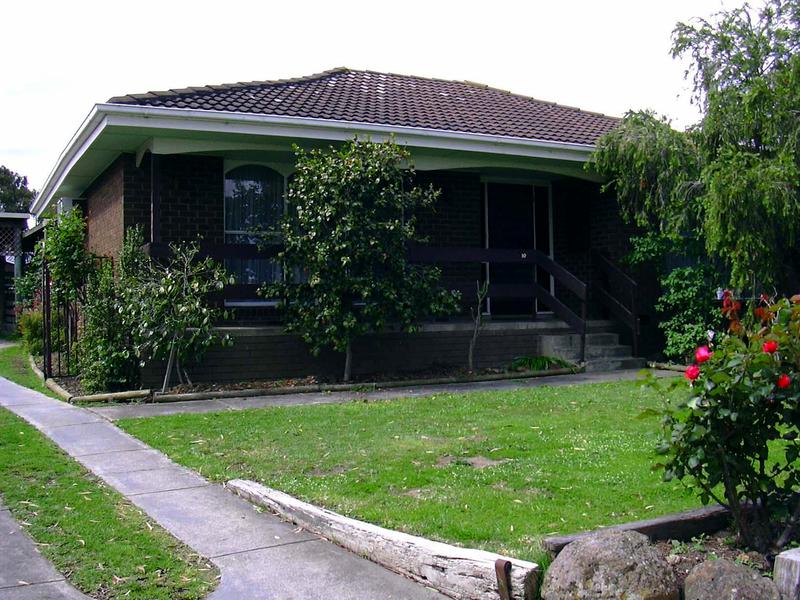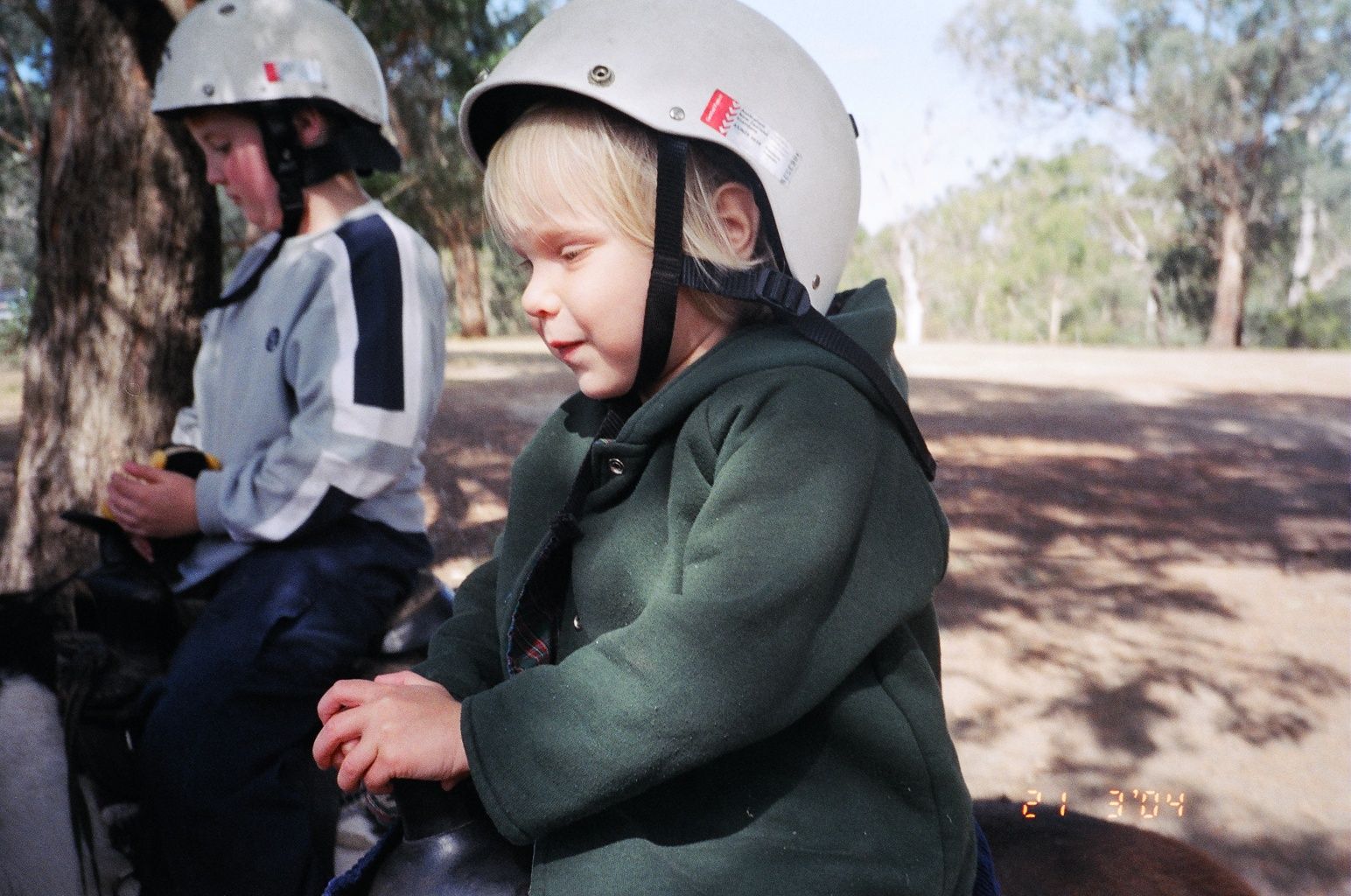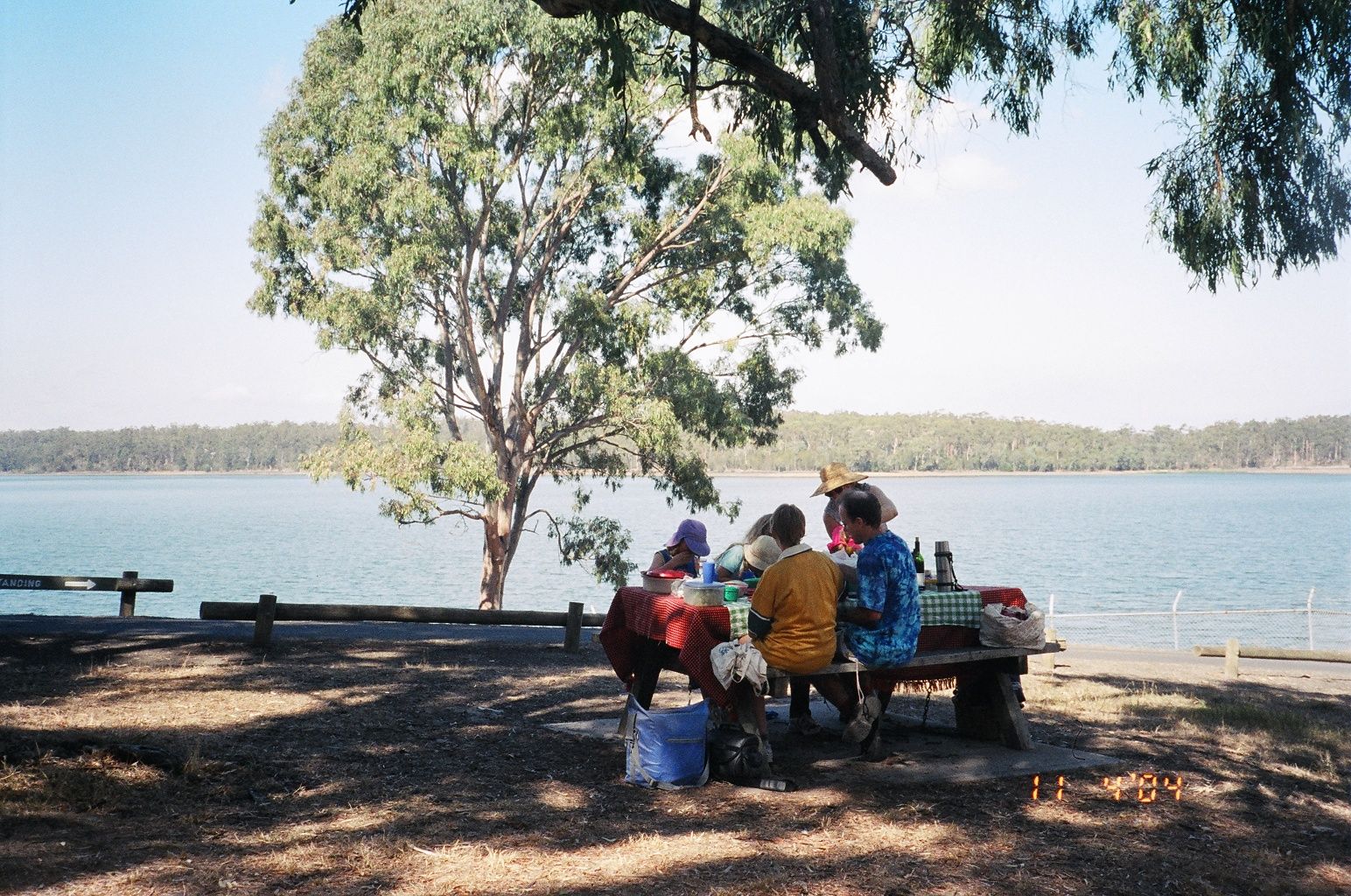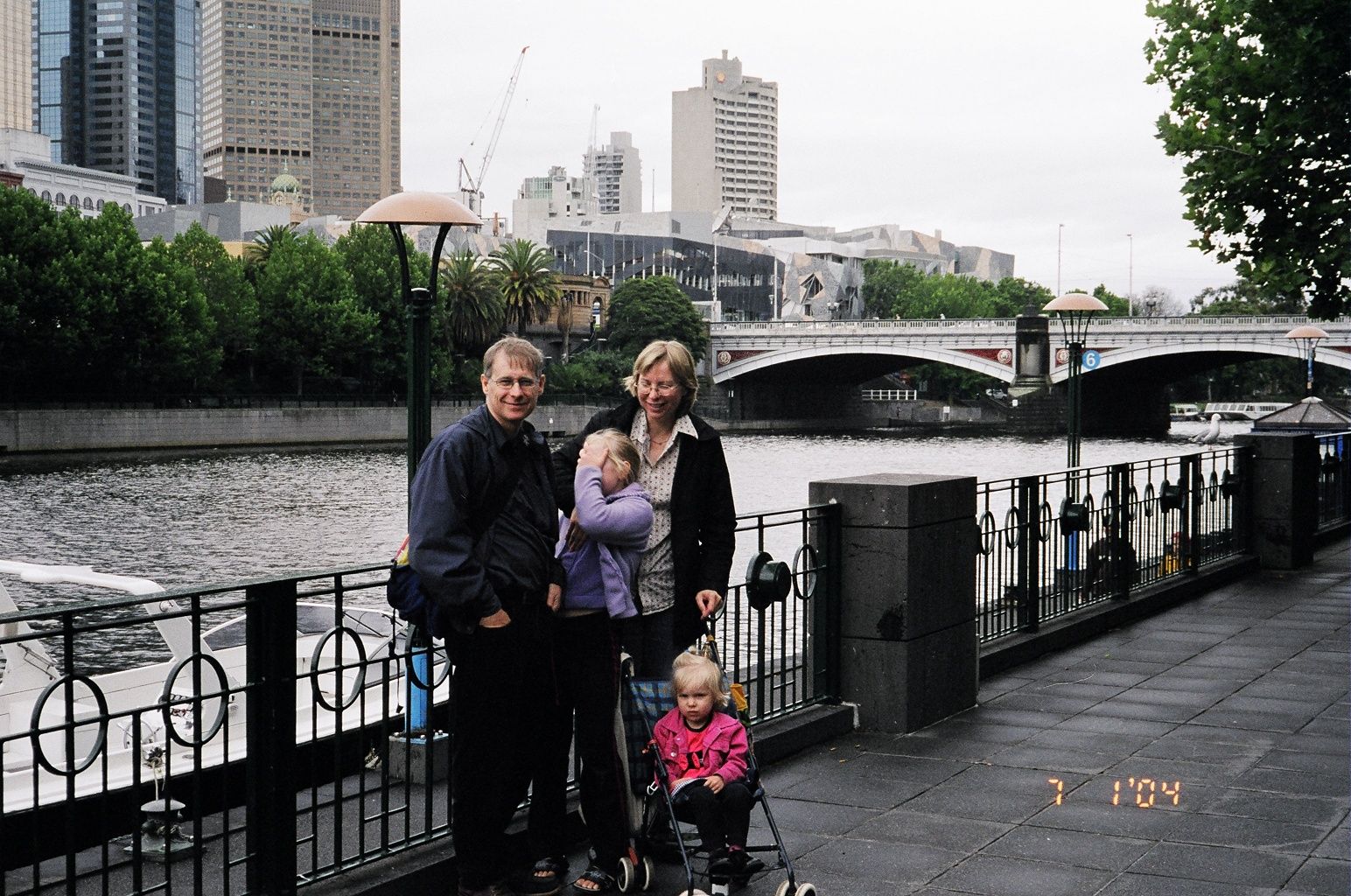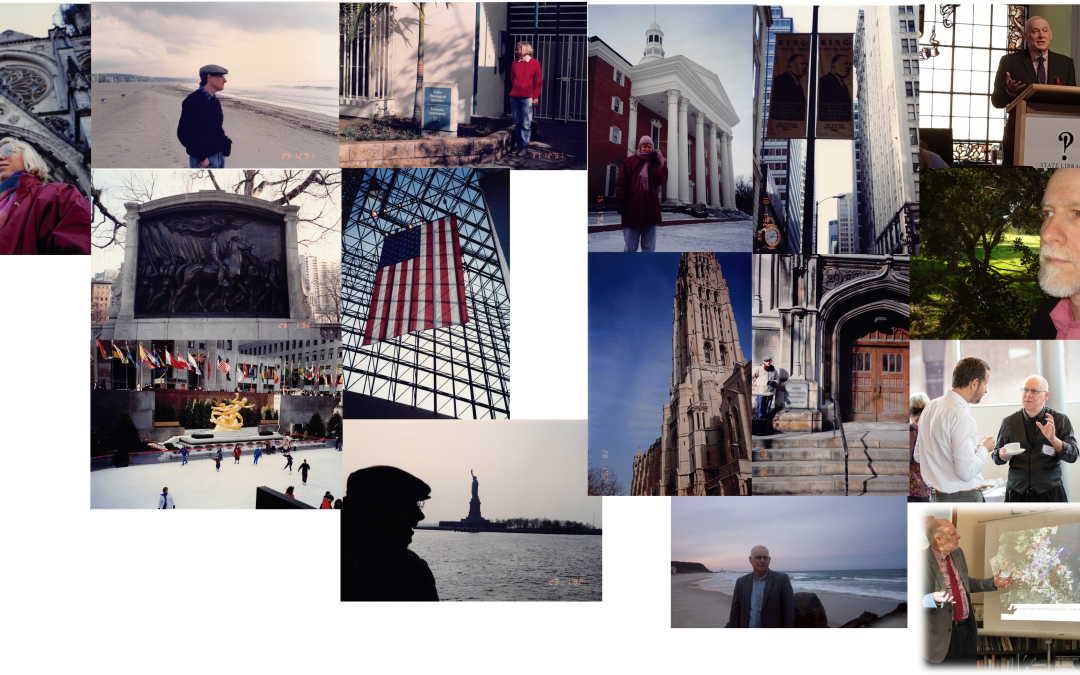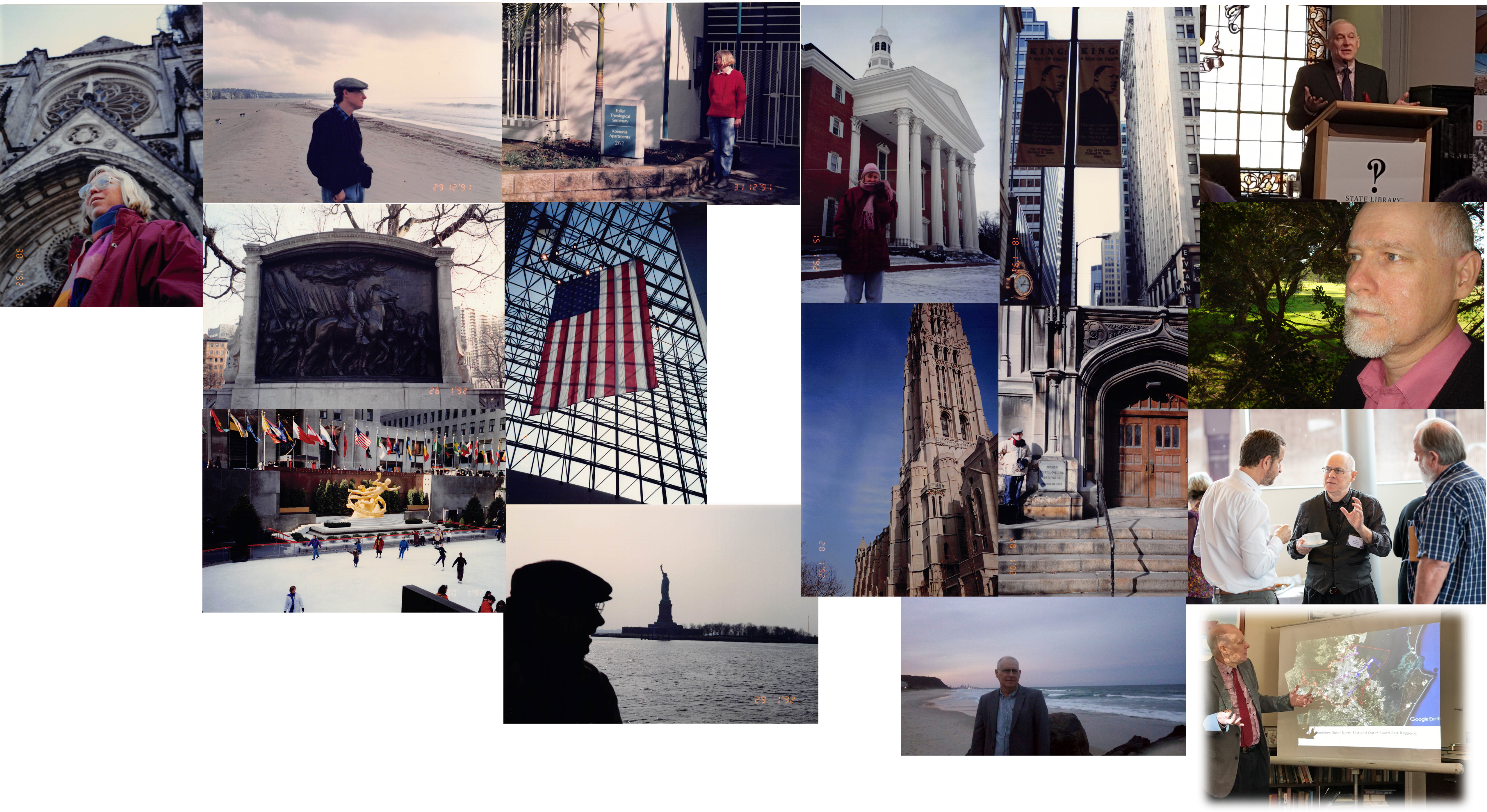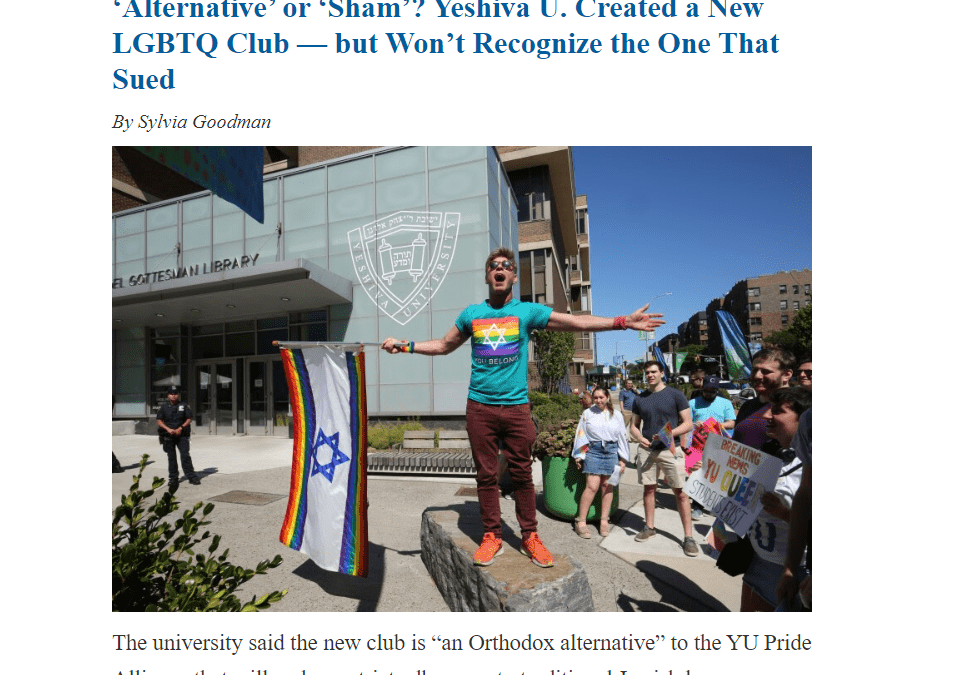
by Neville Buch | Oct 26, 2022 | Article, Blog, Concepts in Educationalist Thought Series, Concepts in Public History for Marketplace Dialogue, Concepts in Religious Thought Series, Intellectual History
Introduction
Today, we hear stories of Orthodox Judaism, and in this recent article from The Chronicle of Higher Education, we learn that ‘new orthodoxy’ is a ‘thing’.
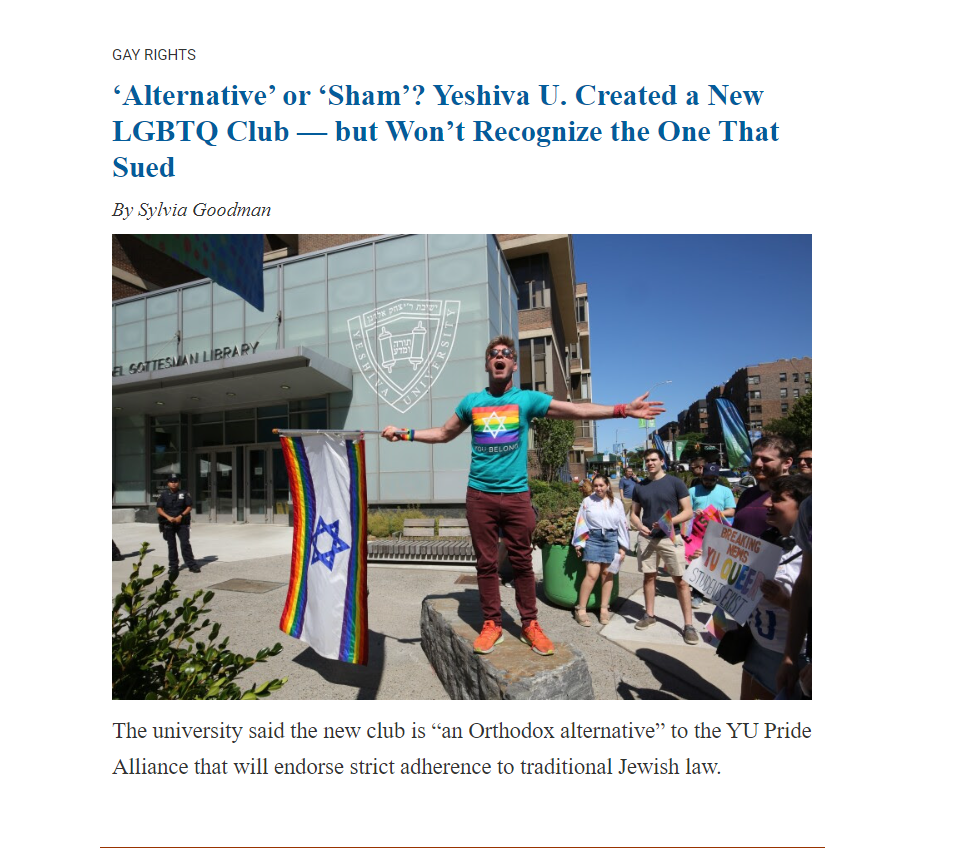
Image: Online story, Sylvia Goodman. ‘Alternative’ or ‘Sham’? Yeshiva U. Created a New LGBTQ Club — but Won’t Recognize the One That Sued, The Chronicle of Higher Education, October 24, 2022.
Dogmatists have been great at denying ‘new orthodoxy’ as a ‘thing’ since the claim brings modification to ‘correct belief’, creating incorrect belief; according to the dogmatists. However, the existence of many ‘new orthodoxies’ proposes an inescapable problem, for the dogmatist. The problem here is not confided to Orthodox Judaism, or even western religions, but any belief system which attempts to avoid admitting systemic error.
The focus here, for the concept of a new orthodoxy or neo-orthodoxy, goes to the worldviews of the Protestant and Catholic schemas, including secular expressions. So, the paper/article/blog (is there a difference today?) puts aside Orthodox Judaism and the Orthodox Christian traditions for obvious reasons, that ‘new orthodoxy’ is intellectually denied. Islam is too complex a story for orthodoxy and lies outside the specialist work of the author. In any case of ‘other religions’ and their schemas, it may well be the case that in ‘other religion’ new orthodoxies exist. The author argues that in the last few centuries the creation of new orthodoxies had come from the evolution in Protestant thought. The key understanding is the three Broad Academic Schools in Studies of Religion and 14 Academic Schools in the Philosophy of Religion
Three Broad Academic Schools in Studies of Religion and 14 Academic Schools in the Philosophy of Religion
The three main academic schools are:
1. That which centred on a general theory of religion developed by Rudolph Otto (1869 – 1937) and then later by Paul Tillich (1886 – 1965). The school had universal thought towards ‘religion’ and it is what began the larger enterprise of the academic studies of (or in) religion. The distinction between ‘academic studies’ and education broadly is made below.
2. That which centred on phenomenon, in opposition to a general theory. It was known as phenomenology of religion and developed by Mircea Eliade (1907 – 1986) but the concepts applied were generated from the leading phenomenologists and existentialists, and in particular, Edmund Husserl (1859 – 1938) and Martin Heidegger (1889 – 1976). In this regard, Paul Tillich’s ‘ultimate concern’ becomes phenomenological. This is a movement in the academic studies that predominated in the mid-twentieth century. It, nevertheless, coexisted with the education of the general theory, and arguably would not have existed without it.
3. That which centred on cultural pluralism. This is particularly the British school of Ninian Smart (1927 – 2001; Lancaster University) and John Hull (1935 – 2015; Birmingham University) in the academic studies, but a fair number of American and British philosophers of religion have been particularly important in the education: Huston Smith (Why Religion Matters, 2001) and Don Cupitt (After God: The Future of Religion, 1997) are significant. The school of ‘religious’ thinking came late; in the last few decades of the twentieth century, and is now predominant in the early 21st century. The school conjoins the phenomenological concern as cultural pluralism and the deeper skepticism of the fourth school emerges from the work of Fitzgerald and McCutcheon which focuses on the conceptual challenges of cultural pluralism.
All together the scholars across the academic studies are known as ‘religionists’. Before looking closely at the three main schools, religionists need to be distinguished with ‘religious educators’. There is a separate academic field of education which is also concerned with the academic studies of religion, but concerned with marrying these theories and concepts of religion to those of educational studies. In this regard, a few more scholars also have to be examined in relation to the Queensland history. John Dewey (1859 – 1952) was a very well-known broad educator whose views on ‘religion’ were very influential among American educators of religion. Dewey’s general theory was A Common Faith (1934), a humanistic study of religion originally delivered as the Dwight H. Terry Lectureship at Yale University. Influencing Dewey and other educators on religion was William James (1842 – 1910). James’ ‘The Will to Believe’, a lecture first published in 1896 is seminal. It brought ideas of Personal Idealism (George Holmes Howison 1834 – 1916) and of Personalism (F. C. S. Schiller 1864 – 1937) into the arrangement of American Pragmatism. Other major influences in the American Religious Education movement were Eric Erikson (1902 – 1994) for his work in the psychology of religion, and Charles Hartshorne (1897 – 2000) for his work in process philosophy. The institutions and persons in the American Religious Education movement will be considered further on.
The 14 Theological Directions from Studies of Religion and Wider Consideration of the Philosophy of Religion
The philosophic thinking has streamed between 30 to 40 theological directions and taken aboard wider consideration of contemporary philosophy of religion than what has generally been recognised in academic theological discourse in relation to the curriculum, but nevertheless has representation in 20th century education for belief and doubt, including formal programs of religious education or Christian education. Seeing how philosophical thinking streams and overlaps into the diverse theological directions, which are represented in educational programs, better provides the wide range of the educational discourse. Ranging from the earliest shift in Christian thought, following from the conventional to the less popular or less known programs, the schools of thought can range from the German Neo-Orthodox Stream to the Anglo-American Atheist-Deist Stream. At this point of the research, the focus is the scoping of Protestant Thought, bearing in mind that innovations in Catholic thought and the continuing non-innovation from the Orthodox tradition will also need to be considered. Furthermore, there are often officially-unstated influences between the three Christian broad traditions. For this reason, Catholic ‘theologians’ who are influential in Queensland, a state where Catholic thought overlapped into the thinking of broad ‘Protestant’ institutions, have to be noted. The following might not be a comprehensive listing of the theological or atheological streams, but the list is extensive and includes all major players who informed religious/Christian education:
- German Neo-Orthodox Stream – Liberal Neo-Orthodoxy
Karl Barth
Dietrich Bonhoeffer
Jürgen Moltmann
| Catholic ‘Theologian’ |
Tradition |
| Karl Rahner |
Nouvelle théologie; Transcendental Thomism |
| Romano Guardini |
|
| Joseph Ratzinger (Pope Benedict XVI) |
|
- European Reformed ‘Neo-Orthodox’ Stream – Liberal Neo-Orthodoxy
Emil Brunner
| Catholic ‘Theologian’ |
Tradition |
| Edward Schillebeeckx |
Dominican |
- German ‘Neo-Orthodox-Process’ Stream – Liberal Neo-Orthodoxy
Wolfhart Pannenberg
- German Existentialist ‘Neo-Orthodox’ Stream – Liberal Neo-Orthodoxy
Rudolf Bultmann
| Catholic ‘Theologian’ |
Tradition |
| Jacques Maritain |
Existential Thomism |
- American Neo-Orthodox-Realist Stream – Liberal Neo-Orthodoxy
Reinhold Niebuhr
Richard Niebuhr
| Catholic ‘Theologian’ |
Tradition |
| Bernard Lonergan |
Transcendental Thomism |
| Avery Dulles |
|
- Anglican ‘Orthodox’ Stream
Richard Swinburne
John Milbank
- Anglo-American Existentialist ‘Neo-Orthodox’ Stream
Paul Tillich
John Macquarrie
- Anglo-America Process ‘Neo-Orthodox’ Stream
Paul Weiss
Charles Hartshorne
Robert Cummings Neville
John B. Cobb
- American ‘Neo-Liberal’/Universalist Stream (‘Neo-Orthodox’?)- Quietism-New Thought-Unitarian-Universalist (Christian) Stream
Langdon Gilkey
John Shelby Spong
| Catholic ‘Theologian’ |
Tradition |
| Hans Küng |
Rejection of Papal Infallibility; Global Ethic |
| John Courtney Murray |
Religious Liberty; Dignitatis Humanae |
- East ‘Asian’ Influence of Confucian-Buddhist-Tao-Shinto (‘Neo-Orthodox’?) Stream – Evangelical Sub-Steams 3. and 4. Radical Discipleship and Liberation
Watchman Nee
S. Song
Simon Chan (AOG)
Kwok Pui-lan (Asian feminist theology)
Chung Hyun Kyung (Asian feminist theology)
| Catholic ‘Theologian’ |
Tradition |
| Thomas Merton |
Trappist |
| Bernadette Roberts |
Carmelite |
| Aloysius Pieris |
Sri Lankan Jesuit |
- Anglo-American African Black Revolutionary- Africana Stream (‘Neo-Orthodox’?)
Cornel West
James H. Cone
Albert Cleage
Barney Pityana
Allan Boesak
Zephania Kameeta
- Anglo-American Quietism-New Thought-Unitarian-Universalist (Christian) Stream (the original modern Christian ‘neo-orthodoxy’?)
Parker Palmer (Quaker)
Elton Trueblood (Quaker)
Rufus Jones (Quaker)
Richard Foster (Quaker)
Emil Fuchs (Quaker)
Ernest Holmes (Christian New Thought)
Johnnie Colemon (Christian New Thought)
James Luther Adams (Unitarian-Universalist)
Webster Kitchell (Unitarian-Universalist)
| Catholic ‘Theologian’ |
Tradition |
| Henri Nouwen |
Catholic Quietism |
| Jean-Luc Marion |
Postmodern Phenomenology |
- Anglo-American ‘Death of God’-Secular Theology Stream (the basis for secular ‘neo-orthodoxy’?)
Harvey Cox
Don Cupitt
Paul van Buren
(14) With 30. Anglo-American Atheist-Deist Stream
Antony Flew
Brand Blanshard
There might be other ways to slice the Protestant and Catholic pie, but the schema is a very accurate worldview outlook in the widest scoping, and it has secular expression in every case.
The collapse of ‘religion’ and the rise of Studies-in-Religion
In last 40 years, the studies in religion discipline had been shaken by a broad set of criticisms for the philosophical category of ‘religion’ and ‘secular’; from a large body of literature, led by well-known scholars, Jonathan Z. Smith (1982), Wilfred Cantwell Smith (1990), Talal Asad (1993), Russell T. McCutcheon (1997, 1999, 2001, 2003, 2012 with William Arnal, 2014), Timothy Fitzgerald (2000, 2007), and Tomoko Masuzawa (2005).

There is urgency in providing education which will defuse the explosive confusion of popular misconceptions in the history of ‘religious’/Christian instruction/‘education’.[1] Education policy makers and the general public have not caught up with the trend in higher education scholarship, and are still thinking in the outdated models of the academic discipline. If we take the last four decades as being the era of the fourth school of philosophical skepticism, there have been three previous academic schools of thought that shaped religious/Christian education: that which focused on a general theory of religion; focused on phenomenology; and focused on cultural pluralism.
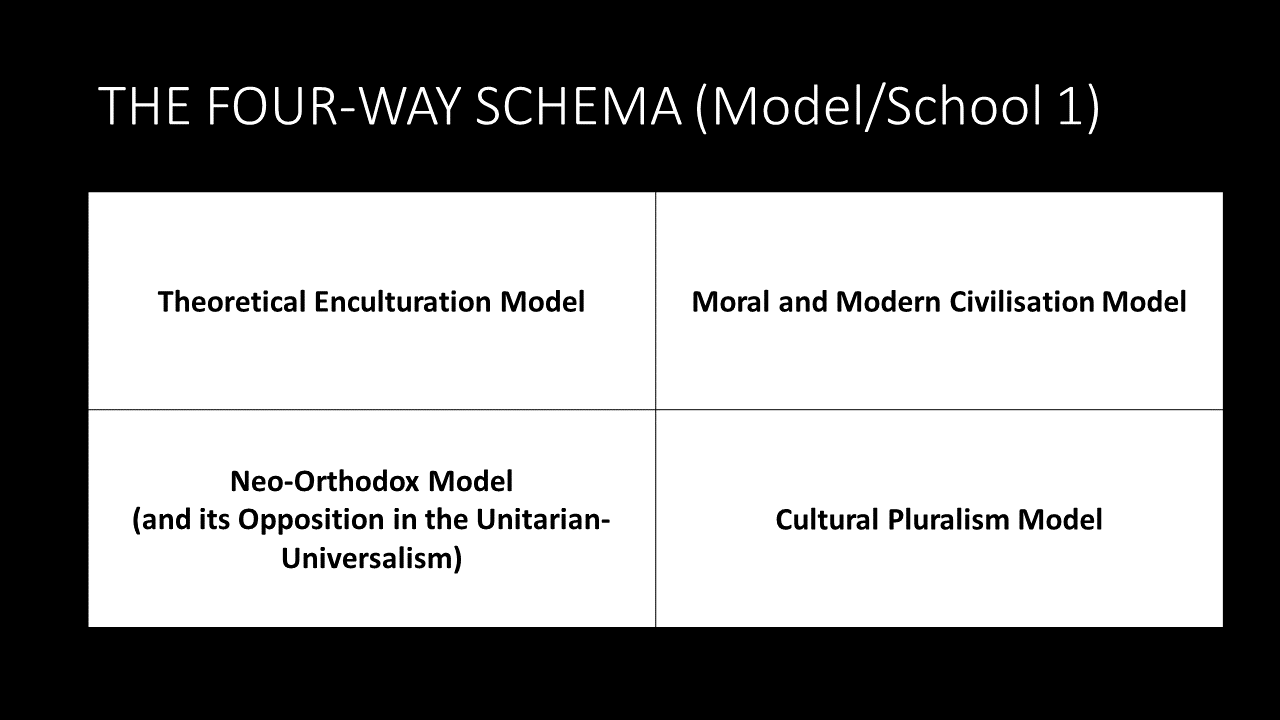
These four-way schemas are being applied in research for a book to provide the Queensland case study. This is an important and urgent analysis since the characterisation of Queensland reinforces the retrograde national narrative for outdated models of church-state relations, and will continue to do so, unless better education for faith and belief is provided. This paper will mark out the Queensland historical players and events on the pathway that shifted back and forth between religious instruction, Christian education, and religious education.
The collapse of ‘orthodoxy’ and the rise of nuanced pluralist models in monist frameworks.
At a local and regional level, as in my research on Queensland intellectual paradigms, neo-orthodoxy is translated, and can be translated, into nuanced frameworks during particular time periods, based on who lived in that local society at the time and the global waves of reading and dialogues (often overlapping):
- Colonial Period
Anti-Erastian Christianity
British Classical Education
Christian Biblicalist Education
Christian Broad-Curriculum Education
Christian Church Education
Christian Classical Education
Christian Conservative Education
Christian Secular Education
Christian Secular Modernist Education
Literary Austra-European (Colonial-Patriotic) Intellectual Education
Pre-Vatican I Catholic Education
- Federation Period
Recap: Colonial Literary Folk Education
British Classical Education
Christian Biblicalist Education
Christian Classical Education
Christian Conservative Broad-Curriculum Education
Efficient Broad-Curriculum Education
International Laborite Education
Irish Loyalist Catholic Education
Liberal-Left Evangelical Education
Vatican I Catholic Education
- Nation-Building Period
Adult and Community Education
Christian Biblicalist Education
Christian Broad-Curriculum Education
Christian Classical Education
Christian Conservative Modernist Education
Christian Modernist Education
Christian Secular Education
Conservative-Liberal Evangelical Education
Egalitarian Utilitarian Agrarian-valued Education
Irish Loyalist Catholic Education
Liberal-Left Evangelical Education
Literary Folk Education
Megachurch Prosperity Gospel Education
Modernist Social Work Education
Post-Idealist Christian Modernist Education
- Period of Mid-Century Neo-Orthodoxy and Heresy
Broad-Curriculum Education
Charismatic Christianity
Christian Broad-Curriculum Education
Christian Conservative Broad-Curriculum Education
Christian Conservative Modernist Education
Christian Modernist Liberal Education
Christian Modernist Social Work Education
Christian Secular Modernist Education
Confucianism (‘foreign’ integrated/appropriated syncretic)
Conservative Evangelical Education
Conservative-Liberal Evangelical Education
Conservative-Liberal Evangelical Indigenous Education
Diagnosis and Remedial Education
Domestic Technical Education
Educational Psychology
Fundamentalist Christianity (Creationism)
Liberal-Left Evangelical Education
Literary Modern Education
Megachurch Prosperity Gospel Education
Modernist Liberal Indigenous Education
Progress Philosophy
Renegade Laborite Education
Traditional Reformed Theology Education
- The Late Modern Period
Charismatic Christianity
Christian Conservative Broad-Curriculum Education
Christian Evangelical Skeptical Education
Christian Modernist Social Work Education
Christian Modernist-Postmodernist Liberal Education
Christian Multiculturalism and Religionist Historiography
Conservative Evangelical Education
Conservative-Liberal Evangelical Education
Conservative-Liberal Evangelical Indigenous Education
Fundamentalist Christianity (Creationism)
Liberal-Left Evangelical Education
Megachurch Prosperity Gospel Education
- The New Century
Christian Modernist Liberal Education
Christian Modernist-Postmodernist Liberal Education
Conservative-Liberal Evangelical Education
Modernist Social Work Education
Traditional Reformed Theology Education
The continual reinvention of orthodox belief was a key part of the frameworks.[2] Together, it works, not as a singular belief system, but as Randall Collins’ The Sociology of Philosophies: A Global Theory of Intellectual Change model for charting relationships of cultural and social transmissions (e.g., ‘Queensland Intellectual Scatterplot Matrix’). The historiographical model is an explanation of the global-local layering, and in my research specifically to:
- Theological Education;
- Church Education Programs; and
- Christian schooling.
On a global scale Collins (1998) argues that cultural and social transmissions happen as networks of scholars, in different types of relationships, and often beyond boundaries of the instituted ‘schools’. The traditional ‘schools’ outlook leads into the critique of Ivan Illich (1970) for “Deschooling Society”. Schools lack the capacity of correcting for the inadequacies for established and personal worldviews. With the movements of transnational histories and the dynamics of global-regional-local relations, we can see how the Queensland intellectual and educational environment was reshaped by scholars between the University of Queensland, Griffith University, and the rest of the educated society.
REFERENCES IN THE PRIMARY SOURCE RESOURCE AND BIBLIOGRAPHY ON THE TOPIC
Ackerman, J. M. (1991). Reading, Writing, and Knowing: The Role of Disciplinary Knowledge in Comprehension and Composing. Research in the Teaching of English, 25(2), 133–178. http://www.jstor.org/stable/40171186
Adam, R. (2008). Relating Faith Development and Religious Styles: Reflections in Light of Apostasy from Religious Fundamentalism. Archiv Für Religionspsychologie / Archive for the Psychology of Religion, 30, 201-231. Retrieved April 29, 2020, from www.jstor.org/stable/23907899
Alford, R. (1961). Catholicism and Australian Politics: A Case Study of ‘Third Parties’ and Political Change. Berkeley Journal of Sociology, 6(1), 15-33. Retrieved April 29, 2020, from www.jstor.org/stable/42888980
Almond, P. (1983). Wilfred Cantwell Smith as Theologian of Religions. The Harvard Theological Review, 76(3), 335-342. Retrieved April 29, 2020, from www.jstor.org/stable/1509527
Almond, Philip C. & Woolcock, P. G. (1978). Dissent in Paradise : Religious Education Controversies in South Australia. Magill, S.A : Murray Park College of Advanced Education
Andrews, D. (1996). Case study in holistic mission No. 20: And now for the Good News from the “Waiters’ Union”. Transformation,13(3), 17-21. Retrieved April 29, 2020, from www.jstor.org/stable/43054943
Arcus, M. E. (1980). Value Reasoning: An Approach to Values Education. Family Relations, 29(2), 163–171. https://doi.org/10.2307/584067
Ata, A., & Windle, J. (2007). The Role of Australian Schools in Educating Students about Islam and Muslims. AQ: Australian Quarterly, 79(6), 19-40. Retrieved April 29, 2020, from www.jstor.org/stable/20638519
Badger, C.R. (1971). The Reverend Charles Strong and the Australian Church, Melbourne, Charles Strong Memorial Trust
Bagood, A. (2010). Complexity System and Our Catholic Faith. Angelicum, 87(1), 177-202. Retrieved May 8, 2020, from www.jstor.org/stable/44616488
Baker, L., et al (2001). Soul, Body, and Survival: Essays on the Metaphysics of Human Persons (Corcoran K., Ed.). Ithaca; London: Cornell University Press. Retrieved May 8, 2020, from www.jstor.org/stable/10.7591/j.ctv3s8s32
Barcan, A. (1990). The Control of Schools and the Curriculum. The Australian Quarterly, 62(2), 170-177. doi:10.2307/20635582
Barcan, A. (2007). Whatever Happened to Adult Education? AQ: Australian Quarterly, 79(2), 29-40. Retrieved April 29, 2020, from www.jstor.org/stable/20638464
Belzil, C., & Leonardi, M. (2013). Risk Aversion and Schooling Decisions. Annals of Economics and Statistics, (111/112), 35-70. doi:10.2307/23646326
Berger, Peter L (1973). The Social Reality of Religion, Harmondsworth, Penguin.
Berger, Peter L. (1998). ‘Protestantism and the quest for certainty’, The Christian Century, 115 (23), 782–796.
Black, A. (1985). The Impact of Theological Orientation and of Breadth of Perspective on Church Members’ Attitudes and Behaviors: Roof, Mol and Kaill Revisited. Journal for the Scientific Study of Religion, 24(1), 87-100. doi:10.2307/1386277
Bouma, Gary (2007). Australian Soul : Religion and Spirituality in the 21st Century, Cambridge University Press
Bowler, Kate, and Wen Reagan (2014). ‘Bigger, Better, Louder: The Prosperity Gospel’s Impact on Contemporary Christian Worship,’ Religion and American Culture: A Journal of Interpretation, vol. 24, no. 2, pp. 186–230.
Brennan, Damien & Barry, Graeme (1997). A syllabus for religious education for Catholic schools : Brisbane Archdiocese : years 1 to 12. Brisbane Catholic Education.
Brennan, Damien & Barry, Graeme (1997). Religious education : a curriculum profile for catholic schools. Brisbane Catholic Education.
Brown, David (2006). Richard Hofstadter: An Intellectual Biography, University of Chicago Press
Bruner, Jerome S. (1977). The Process of Education, Cambridge: Harvard University Press,
Bruno-Jofré, Rosa (2022). Ivan Illich Fifty Years Later: Situating Deschooling Society in His Intellectual and Personal Journey, University of Toronto Press
Buch, Neville (1995). ‘Americanizing Queensland Protestantism’, Studying Australian Christianity 1995 Conference, Robert Menzies College, Macquarie University, July.
Buch, Neville (1995). The Significance of the American Invasion for Australian Churches: A Preliminary Examination, War’s End Conference (Queensland Studies Centre, Griffith University), University Hall, James Cook University, July.
Buch, Neville (1997). ‘‘…many distractions confronting the Church’: The Responses of Protestant Religion to Popular Culture in Queensland 1919-1969,’ Everyday Wonders Popular Culture: Past and Present’, 10th International Conference, Crest Hotel, Brisbane, June.
Buch, Neville (2007). Religion Remain a Problem. The Skeptic. Summer.
Buckley Jr., William F. (1951). God and Man at Yale: The Superstitions of “Academic Freedom”, Washington, D.C: Regnery Publishing.
Burritt, A. (2022). Jesus in Schools: The Education (Religious Instruction) Act 1950. Journal for the Academic Study of Religion, 35(1), 94–111. https://doi.org/10.1558/jasr.22394
Carson, D.A. (2008). Christ and Culture Revisited, Grand Rapids: William B. Eerdmans Publishing Company
Chant, Barry (1984; revised edition). Heart of Fire: The Story of Australian Pentecostalism, Unley Park: House of Tabor.
Chant, Barry (1999), ‘The spirit of Pentecost: Origins and development of the Pentecostal movement in Australia, 1870–1939’, PhD thesis, Macquarie University.
Chant, Barry (2006). The Hallowed Touch: A Reflection on the Assembly of God Church, North Queensland, 1924-1949, Australasian Pentecostal Studies, 9, webpage
Chant, Barry (2011). The Spirit of Pentecost: The Origins and Development of the Pentecostal Movement in Australia, 1870-1939, Emeth Press.
Chappell, D. (2004). Prophetic Christian Realism and the 1960s Generation. In A Stone of Hope: Prophetic Religion and the Death of Jim Crow (pp. 67-86). University of North Carolina Press. Retrieved May 22, 2020, from www.jstor.org/stable/10.5149/9780807895573_chappell.7
Chilton, Hugh (2019). Evangelicals and the End of Christendom: Religion, Australia and the Crises of the 1960s, Routledge.
Clark, William (2006). Academic Charisma and the Origins of the Research University, University of Chicago Press
Clifton, Shane (2009). Pentecostalism and the Age of Interpretation: A Response, Australasian Pentecostal Studies, Issue 11. Retrieved from https://aps-journal.com/index.php/APS/article/view/96
Clifton, Shane J. (2005). An analysis of the developing ecclesiology of the Assemblies of God in Australia, PhD thesis, Australian Catholic University.
Collins, Randall (1998). The Sociology of Philosophies: A Global Theory of Intellectual Change, Harvard University Press.
Connell, W.F.. 1980. A History of Education in the Twentieth Century World. Canberra.
Crook, Paul (2017). Intellectuals and the Decline of Religion: Essays and Reviews, Brisbane: Boolarong Press
Crown, A. (1977). The Initiatives and Influences in the Development of Australian Zionism, 1850-1948. Jewish Social Studies, 39(4), 299-322. Retrieved April 28, 2020, from www.jstor.org/stable/4466971
Curthoys, Ann (1991) Teaching applied history, Australian Historical Studies, 24:96, 192-197, DOI: 10.1080/10314619108595880
Davis, Glyn (2017). The Australian Idea of a University, Melbourne University Press
Davison, Graeme (1988) The Use and Abuse of Australian History, Australian Historical Studies, 23:91, 55-76, DOI: 10.1080/10314618808595790
Dayton, D. (1988). Pentecostal/Charismatic Renewal And Social Change: A Western Perspective. Transformation, 5(4), 7-13. Retrieved May 9, 2020, from www.jstor.org/stable/43053010
De Souza, M. (2014). Religious Identity and Plurality amongst Australian Catholics: Inclusions, Exclusions and Tensions. Journal for the Study of Religion, 27(1), 210-233. Retrieved May 6, 2020, from www.jstor.org/stable/24798877
Del Nevo, Matthew (2007). Pentecostalism and the Three Ages of the Church, Australasian Pentecostal Studies, Issue 10. Retrieved from https://aps-journal.com/index.php/APS/article/view/23
Dening, G. M. (1973) History as a social system, Historical Studies, 15:61, 673-685, DOI: 10.1080/10314617308595498
Deverell, Garry Worete (2018). Theology : A Trawloolway man reflects on Christian Faith, Morning Star Publishing
Dewey, John (1934, 2013). A Common Faith, Yale University Press, New Haven, Conn.
Dewey, John (1909). Moral Principles in Education, Boston : Houghton Mifflin
Dewey, John (1916). Democracy and Education: An Introduction to the Philosophy of Education, London: Macmillan and Co. Limited.
Dewey, John (1938). Experience and Education, New York: Simon and Schuster.
Dulles, Avery (1988). Models of the church (2nd ed). Dublin: Gill and Macmillan,
Dux, Monica (2021). Lapsed: Losing Your Religion is Harder Than it Looks, ABC Books
Emison, Mary (2013). Degrees for a New Generation: Marking the Melbourne Model, University of Melbourne Press
Erb, F. (1916). The Development of the Young People’s Movement. The Biblical World, 48(3), 129-192. Retrieved May 6, 2020, from www.jstor.org/stable/3142079
Erdozain, Dominic (2016). The soul of Doubt : the religious roots of unbelief from Luther to Marx. Oxford University Press
Evers, Colin and Gabriele Kakomski (2022). Why Context Matters in Educational Leadership: A New Theoretical Understanding, Routledge, Abingdon, Oxan, UK.
Fitzgerald, Timothy (2000). The Ideology of Religious Studies, Oxford University Press.
Fitzgerald, Timothy (2007). Discourse on Civility and Barbarity : a critical history of religion and related categories. Oxford University Press, Oxford
Fogarty, Stephen (2011). The Dark Side of Charismatic Leadership, Australasian Pentecostal Studies, 13, webpage
Freire, Paulo. (1970a). Cultural Action and Conscientization, Harvard Education Review 40, (3), 452-477.
Freire, Paulo. (1970b). Pedagogy of the Oppressed, New York: Seabury Press.
Freire, Paulo. (1972b). A letter to a theology student, Catholic Mind, 70, 1265.
Freire, Paulo. (1973). Education for Critical Consciousness, New York: Seabury Press.
Freire, Paulo. (1975). Conscientization, Geneva: World Council of Churches.
Freire, Paulo. (1976). Education, the Practice of Freedom, London: Writers and Readers Publishing Cooperative.
Freire, Paulo. (1985). The Politics of Education: Culture, Power and Liberation, South Hadley: Bergin & Garvey.
Freire, Paulo. (1994). Pedagogy of Hope: Reliving Pedagogy of the Oppressed, New York: Continuum.
Freire, Paulo. (1998b). Politics and Education, Los Angeles: UCLA Latin American Center Publications.
French, E. (1965). The Australian Tradition in Secondary Education 1814-1900. Comparative Education, 1(2), 89-103. Retrieved April 28, 2020, from www.jstor.org/stable/3098340
Friesen, G., & Taksa, L. (1996). Workers’ Education in Australia and Canada: A Comparative Approach to Labour’s Cultural History. Labour History, (71), 170-197. doi:10.2307/27516453
Ganter, R. (2018). Engaging with missionaries. In The Contest for Aboriginal Souls: European missionary agendas in Australia (pp. 107-146). Australia: ANU Press. Retrieved May 6, 2020, from www.jstor.org/stable/j.ctv301dv4.9
Ganter, R. (2018). Protestants divided. In The Contest for Aboriginal Souls: European missionary agendas in Australia (pp. 23-48). Australia: ANU Press. Retrieved May 6, 2020, from www.jstor.org/stable/j.ctv301dv4.6
Garrison, J. (1995). Deweyan Pragmatism and the Epistemology of Contemporary Social Constructivism, American Educational Research Journal, 32(4), 716-740.
Gilbert, Bennett (2020). A Personalist Philosophy of History, Routledge
Giroux, Henry (1983, co-edited with David E. Purpel). The Hidden Curriculum and Moral Education: Deception or Discovery? Berkeley: McCutchan.
Giroux, Henry and Stanley Aronowitz (1985). Education Under Siege: The Conservative, Liberal, and Radical Debate Over Schooling, Westport: Bergin and Garvey Press.
Giroux, Henry and Stanley Aronowitz (1991). Postmodern Education: Politics, Culture, and Social Criticism, Minneapolis, MN: University of Minnesota Press.
Goldburg, P. (2008). Teaching Religion in Australian Schools. Numen, 55(2/3), 241-271. Retrieved April 29, 2020, from www.jstor.org/stable/27643310
Gough, Austin (1962) Catholics and the free society, Historical Studies: Australia and New Zealand, 10:39, 370-378, DOI: 10.1080/10314616208595243
Gowers, Ann & Scott, Roger. 1979. Fundamentals and fundamentalists : a case-study of education and policy-making in Queensland. Australasian Political Studies Association, Bedford Park, S.A.
Graeber, David (2018). Bullshit jobs (First Simon & Schuster hardcover edition). Simon & Schuster, New York
Grey, Jacqueline (2002). Torn Stockings and Enculturation: Women Pastors in the Australian Assemblies of God, Australasian Pentecostal Studies, Issue 5/6. Retrieved from https://aps-journal.com/index.php/APS/article/view/51
Gwenda Tavan (1997) ‘Good neighbours’: Community organisations, migrant assimilation and Australian society and culture, 1950–1961, Australian Historical Studies, 27:109, 77-89, DOI: 10.1080/10314619708596044
Hally, C. (1960). Student Formation in Australia. The Furrow,11(10), 662-666. Retrieved May 6, 2020, from www.jstor.org/stable/27657937
Handy, Robert T. (1976). A History of the Churches in the United States and Canada, Oxford at the Clarendon Press.
Handy, Robert T. (1977). A Christian America: Protestant Hopes and Historical Realities, New York. Oxford University Press.
Hannah-Jones, A. (2003). Competing Claims for Justice: Sexuality and Race at the Eighth Assembly of the Uniting Church in Australia, 1997. Journal of the History of Sexuality, 12(2), 277-304. Retrieved April 28, 2020, from www.jstor.org/stable/3704615
Hans, N. (1939). History of Education in the British Commonwealth of Nations. Review of Educational Research,9(4), 361-367. Retrieved April 28, 2020, from www.jstor.org/stable/1167565
Harris, F. (2007). Dewey’s Concepts of Stability and Precariousness in His Philosophy of Education, Education and Culture, 23(1), 38-54.
Harrison, John. (2006). The Religious Culture of Queensland: Pietism in Religious Practice, Congregationalism in Ecclesiastical Polity. Ph.D. thesis, University of Queensland.
Hayot, Eric (2021). Humanist Reason: A History, An Argument, A Plan, Columbia University Press
Hedges, Paul Michael (2021). Understanding Religion: Theories and Methods for Studying Religiously Diverse Societies, University of California Press
Hey, Sam (2011). God in the Suburbs and Beyond: The Emergence of an Australian Megachurch and Denomination. Ph.D thesis, School of Humanities, Griffith University.
Hey, Sam and Geoff Waugh (2016). Megachurches: Origins, Ministry and Prospects. Morning Star Publishing.
Higgins, Jackie (1998, 2022). Sister Girl: Reflections on Tiddalism, Identity and Reconciliation, University of Queensland Press
Hilliard, David (1991) God in the suburbs: The religious culture of Australian cities in the 1950s, Australian Historical Studies, 24:97, 399-419, DOI: 10.1080/10314619108595856
Hilliard, David (1997) Church, family and sexuality in Australia in the 1950s, Australian Historical Studies, 27:109, 133-146, DOI: 10.1080/10314619708596048
Hoffer, Eric (2002). The True Believer : thoughts on the nature of mass movements (First Perennial Modern Classics edition). Harper Perennial Modern Classics, New York
Hogan, M. (1979). Australian Secularists: The Disavowal of Denominational Allegiance. Journal for the Scientific Study of Religion, 18(4), 390-404. doi:10.2307/1386363
Horne, Donald (2022). The Education of Young Donald Horne Trilogy, NewSouth Publishing
Howe, Brian & Hughes, Philip, et al. (2003). Spirit of Australia II : religion in citizenship and national life. ATF Press, Hindmarsh, SA
Hudson, Wayne (2016). Australian religious thought. Monash University Publishing, Clayton, Victoria
Hughes, Philip (1996). The Pentecostals in Australia, Australian Government Publishing Service, Canberra, ACT.
Hutch, R. (1987). Biography, Individuality and the Study of Religion. Religious Studies, 23(4), 509-522. Retrieved April 29, 2020, from www.jstor.org/stable/20019245
Hutchinson, Mark (1999). The New Thing God is Doing: The Charismatic Renewal and Classical Pentecostalism, Australasian Pentecostal Studies, 1, webpage
Hutchinson, Mark (2017). Australasian Charismatic Movements and the “New Reformation of the 20th Century?” Australasian Pentecostal Studies, Issue 19.
Illich, Ivan (1971). Deschooling Society. London: Calder & Boyars.
Illich, Ivan (1973). Tools for Conviviality. New York: Harper & Row.
Illich, Ivan (1974). Energy and Equity. London: Calder & Boyars.
Illich, Ivan , et al (edited,1977). Disabling Professions, New York Marion Boyars
Jagelman, Ian (1999). Church Growth: Its Promise and Problems for Australian Pentecostalism, Australasian Pentecostal Studies, Issue 1. Retrieved from https://aps-journal.com/index.php/APS/article/view/46
Jagelman, Ian (1999). Harvey Cox and Pentecostalism: A Review of Fire from Heaven, Australasian Pentecostal Studies, 1,webpage
Jones, Adrian (2011) Teaching History at University through Communities of Inquiry, Australian Historical Studies, 42:2, 168-193, DOI: 10.1080/1031461X.2010.531747
Jordan, Trevor L. (2007). Scapegoating Girard: Violence and the future of religion. St Mark’s Review, (202), 31-38.
Jordan, Trevor. (1992). Ethical education after Fitzgerald: return to a golden past or the end of civilisation as we know it? Social Alternatives, 11(3)
Jordan, Trevor. (1998). Studies in Religion as a Profession. Australian Religion Studies Review. 11(2)
- S. Inglis (1958) Catholic historiography in Australia, Historical Studies: Australia and New Zealand, 8:31, 233-253, DOI: 10.1080/10314615808595120
KIRK, G. (2015). The Shortcomings of Abstraction (1871–2017). In The Pedagogy of Wisdom: An Interpretation of Plato’s Theaetetus (pp. 155-196). Evanston, Illinois: Northwestern University Press. Retrieved May 7, 2020, from www.jstor.org/stable/j.ctv47wcf7.9
Kohn, Rachael (2003). The New Believers: Re-Imagining God, Harper Collins
Labaree, D. F. (1997). Public Goods, Private Goods: The American Struggle over Educational Goals. American Educational Research Journal, 34(1), 39–81. https://doi.org/10.2307/1163342
Lattke, M. (1985). Rudolf Bultmann on Rudolf Otto. The Harvard Theological Review, 78(3/4), 353-360. Retrieved April 29, 2020, from www.jstor.org/stable/1509695
Lawry, J. (1967). The Development of a National System of Education in New South Wales. History of Education Quarterly,7(3), 349-356. doi:10.2307/367177
Lecompte, M. D. (2014). Collisions of culture: Academic culture in the neoliberal university. Learning and Teaching: The International Journal of Higher Education in the Social Sciences, 7(1), 57–78. http://www.jstor.org/stable/24717955
Leigh Boucher & Michelle Arrow (2016) ‘Studying Modern History gives me the chance to say what I think’: learning and teaching history in the age of student-centred learning, History Australia, 13:4, 592-607, DOI: 10.1080/14490854.2016.1249274
Loos, N. (1991). From Church to State: The Queensland Government Take-Over of Anglican Missions In North Queensland. Aboriginal History, 15(1/2), 73-85. Retrieved April 28, 2020, from www.jstor.org/stable/24046403
Macintyre, Stuart (2009) The Poor Relation: Establishing the Social Sciences in Australia, 1940–1970, Australian Historical Studies, 40:1, 47-62, DOI: 10.1080/10314610802663019
Macklin, Michael (1972). To Deschool Society, Cold Comfort, December 1972.
Macklin, Michael (1975). Those Misconceptions are not Illich’s, Educational Theory, 25 (3), 323-329
Macklin, Michael (1976). When Schools are Gone: A Projection of the Thought of Ivan Illich, St. Lucia: University of Queensland Press.
Maddox, Marion (2001). For God and Country: Religious Dynamics in Australian Federal Politics, Canberra: Parliament of Australia
Maddox, Marion (2005). God Under Howard: The Rise of The Religious Right in Australian Politics, Sydney: Allen & Unwin
Maddox, Marion (2014). Taking God to School: The End of Australia’s Egalitarian Education, Allen & Unwin
Malcolm Vick (1992) Community, state and the provision of schools in mid‐nineteenth century South Australia, Australian Historical Studies, 25:98, 53-71, DOI: 10.1080/10314619208595893
Marginson, S. (1997). Imagining Ivy: Pitfalls in the Privatization of Higher Education in Australia. Comparative Education Review, 41(4), 460-480. Retrieved April 28, 2020, from www.jstor.org/stable/1189004
Marginson, Simon (2016). Higher Education and the Common Good. Melbourne University Publishing
Marsden, George M. (1987). Reforming Fundamentalism. Fuller Seminary and the New Evangelicalism, Grand Rapids: William B. Eermanns Publishing Company.
Marsden, W. E. (2000). Geography and Two Centuries of Education for Peace and International Understanding. Geography, 85(4), 289–302. http://www.jstor.org/stable/40573474
Marti, Gerardo (2020). American Blindspot: Race, Class, Religion, and the Trump Presidency, London: Rowman & Littlefield.
Marty, Martin E. (1970). Righteous Empire. The Protestant Experience, New York:The Dial Press.
Mavor, Ian. 1977. Religious education : its nature and aims : a statement of principles underlying the development work of the Religious Education Curriculum Project. Queensland. Dept. of Education. Religious Education Curriculum Project. Select
MAYRL, D. (2011). Administenng Secularization: Religious Education in New South Wales since 1960. European Journal of Sociology / Archives Européennes De Sociologie / Europäisches Archiv Für Soziologie, 52(1), 111-142. Retrieved April 29, 2020, from www.jstor.org/stable/43282174
McCutcheon, Russell T (1997). Manufacturing Religion : the discourse on sui generis religion and the politics of nostalgia. Oxford University Press, New York
McCutcheon, Russell T. (2014). Entanglements: Marking Place in the Field of Religion, Equinox Publishing.
McDonagh, S. (2006). The Australian Church and Climate Change. The Furrow, 57(1), 48-53. Retrieved April 29, 2020, from www.jstor.org/stable/27665281
McLoughlin, William G. (1987). Revivals, Awakenings and Reform: An Essay on Religion and Social Change in America 1607-1977, The University of Chicago Press.
Mead, Sidney E. (1975). The Nation with the Soul of a Church, New York: Harper and Row.
Meyer, C. (2000). “What a Terrible Thing It Is to Entrust One’s Children to Such Heathen Teachers”: State and Church Relations Illustrated in the Early Lutheran Schools of Victoria, Australia. History of Education Quarterly, 40(3), 302-319. doi:10.2307/369555
Miller, R. (1939). Is Temple a Realist? The Journal of Religion,19(1), 44-54. Retrieved May 7, 2020, from www.jstor.org/stable/1197939
Mol, H. (1974). The Sacralization of the Family With Special Reference to Australia. Journal of Comparative Family Studies, 5(2), 98-108. Retrieved April 29, 2020, from www.jstor.org/stable/41600888
Mol, J. (1969). Rites of Passage in Australia. The Australian Quarterly, 41(3), 64-74. doi:10.2307/20634302
Montessori, Maria (1914). Dr. Montessori’s Own Handbook, New York: Frederick A. Stokes Company.
Montessori, Maria (1949). The Absorbent Mind, Madras: Theosophical Publishing House.
Montessori, Maria (Translated by Anne E. George,1912). The Montessori Method: Scientific Pedagogy as Applied to Child Education in ‘The Childhood Houses’ with Additions and Revisions by the Author, New York: Frederick A. Stokes Company.
Montessori, Maria (Translated by Barbara B. Carter, 1936). The Secret of Childhood, New York: Longmans, Green & Co. Inc.
Montessori, Maria (Translated by Mary A. Johnstone, 1948). The Discovery of the Child, Madras: Kalakshetra Publications Press.
Mulder, Mark & Marti, Gerardo. (2020). The Glass Church: Robert H. Schuller, the Crystal Cathedral, and the Strain of Megachurch Ministry, Rutgers University Press
Murphy, Kate (2015) ‘In the Backblocks of Capitalism’: Australian Student Activism in the Global 1960s, Australian Historical Studies, 46:2, 252-268, DOI: 10.1080/1031461X.2015.1039554
Murray, Iain H. (1988) Australian Christian Life From 1788: An Introduction and an Anthology, Edinburgh: The Banner of Truth Trust.
Myers, Benjamin (2012). Christ the Stranger: The Theology of Rowan Williams, t & t Clark.
Nethersole, Reingard (2015). Twilight of the Humanities: Rethinking (Post)Humanism with J.M. Coetzee. Symplokē, 23(1-2), 57-73. doi:10.5250/symploke.23.1-2.0057
Niebuhr, Reinhold (1932). Moral Man and Immoral Society: A Study in Ethics and Politics, Charles Scriber’s Sons [Rev. Ed. Westminster John Knox, 2001].
Niebuhr, Richard (1937). The Kingdom of God in America
Niebuhr, Richard (1951). Christ and Culture, New York: Harper and Brothers Publishers
Niebuhr, Richard (1963). The Responsible Self : An Essay in Christian Moral Philosophy
Noddings, Nel (2013). Education and Democracy in the 21st Century, Teachers’ College Press
Noddings, Nel (1984). Caring: A Feminine Approach to Ethics and Moral Education, Berkeley: University of California Press.
Noddings, Nel (1996). Stories and Affect in Teacher Education, Cambridge Journal of Education, 26 (3).
Noddings, Nel (1999). Justice and Caring: The Search for Common Ground in Education, Teachers College Press, New York.
Noddings, Nel (2005). Identifying and Responding to needs in Teacher Education, Cambridge Journal of Education, 35 (2).
Noddings, Nel (2005). What does it mean to Educate the WHOLE child? Educational Leadership, 63 (1).
Noel Pearson (2021). Mission: Essays, Speeches & Ideas, Black Inc.
Nolan, Carolyn & Stuartholme Convent of the Sacred Heart (Brisbane, Qld.) (1995). Ribbons, beads and processions : the foundation of Stuartholme. Stuartholme Parents and Friends Association, Toowong, Qld
Nuyen, A. (2001). Realism, Anti-Realism, and Emmanuel Levinas. The Journal of Religion, 81(3), 394-409. Retrieved April 29, 2020, from www.jstor.org/stable/1206402
Nye, Adele, and Marnie Hughes-Warrington, Jill Roe, Penny Russell, Mark Peel, Desley Deacon, Amanda Laugeson & Paul Kiem (2009). Historical Thinking in Higher Education, History Australia, 6:3, 73.1-73.16, DOI: 10.2104/ha090073
O’Brien, Anne (1993) ‘A church full of men’: Masculinism and the church in Australian history, Australian Historical Studies, 25:100, 437-457, DOI: 10.1080/10314619308595925
O’Brien, Anne (1996) The case of the ‘cultivated man’: Class, gender and the church of the establishment in interwar Australia, Australian Historical Studies, 27:107, 242-256, DOI: 10.1080/10314619608596012
O’Brien, Anne (1997) Sins of Omission? Women in the history of Australian religion and religion in the history of Australian women. A reply to Roger Thompson, Australian Historical Studies, 27:108, 126-133, DOI: 10.1080/10314619708596032
O’Brien, Anne (2002) Historical overview spirituality and work Sydney women, 1920–1960, Australian Historical Studies, 33:120, 373-388, DOI: 10.1080/10314610208596226
O’Farrell, Patrick (1977) Historians and religious convictions, Historical Studies, 17:68, 279-298, DOI: 10.1080/10314617708595552
Ono, A. (2012). You gotta throw away culture once you become Christian: How ‘culture’ is Redefined among Aboriginal Pentecostal Christians in Rural New South Wales. Oceania, 82(1), 74-85. Retrieved April 27, 2020, from www.jstor.org/stable/23209618
Osborn, D. (2010). CHAPTER THREE: Resisting the State: Christian Fundamentalism and A Beka. Counterpoints, 376, 35-45. Retrieved April 28, 2020, from www.jstor.org/stable/42980731
Otto, R., & Almond, P. (1984). Buddhism and Christianity: Compared and Contrasted. Buddhist-Christian Studies, 4, 87-101. doi:10.2307/1389938
Pals, Daniel (2022). Ten Theories of Religion, Oxford University Press.
Perry, B. (2011). Universities and Cities: Governance, Institutions and Mediation. Built Environment (1978-), 37(3), 244–259. http://www.jstor.org/stable/23290044
Petersen, D. (1999). Missions in the twenty-first century: Toward a methodology of Pentecostal compassion. Transformation, 16(2), 54-59. Retrieved May 9, 2020, from www.jstor.org/stable/43053095
Phillips, R. (1978). John Dewey Visits the Ghetto. The Journal of Negro Education, 47(4), 355-362. doi:10.2307/2295000
Phillips, Walter (1981). Defending “a Christian country” : churchmen and society in New South Wales in the 1880s and after. University of Queensland Press, St. Lucia, Qld
Piaget, Jean (1953). Logic and Psychology, Manchester: Manchester University Press,
Piaget, Jean (1969). The Mechanisms of Perception, New York: Basic Books.
Piaget, Jean (1977). The Grasp of Consciousness: Action and concept in the young child, London: Routledge and Kegan Paul.
Pietsch, Tamson (2015). Empire of Scholars : Universities, Networks and the British Academic World, 1850-1939. Manchester University Press, Oxford
Piggin, Stuart & Linder, Robert D., (author.) & Scalmer, Sean, (series editor.) & Monash University Publishing, (publisher.) (2018). The Fountain of Public Prosperity : evangelical Christians in Australian history 1740 – 1914. Monash University Publishing, Clayton, Vic
Pizmony-Levy, O. (2011). Bridging the Global and Local in Understanding Curricula Scripts: The Case of Environmental Education. Comparative Education Review, 55(4), 600–633. https://doi.org/10.1086/661632
Rademaker, Laura; Noelani Goodyear-Ka’opua, April K. Henderson (2022). Found in Translation : Many Meanings on a North Australian Mission, University of Hawai’i Press.
Radford, M. (2007). Passion and Intelligibility in Spiritual Education, British Journal of Educational Studies, 55 (1), 21-36.
Riches, Tanya (2010). Next Generation Essay: The Evolving Theological Emphasis of Hillsong Worship (1996–2007), Australasian Pentecostal Studies, Issue 13. Retrieved from https://aps-journal.com/index.php/APS/article/view/108
Ringma, Charles; Chadwick, Remy. (2017). Three Graces for a Word of Truth. The church’s calling in a troubled world: the grand design and fragile engagement. Hawthorn, VIC: Zadok Institute for Christianity and Society.
Rocha, Cristina, Mark P. Hutchinson and Kathleen Openshaw (edited, 2020). Australian Pentecostal and Charismatic Movements: Arguments from the Margins, Leiden: Brill.
Rouse, Joseph (2015). Articulating the World: Conceptual Understanding and the Scientific Image, The University of Chicago Press
Rutland, Suzanne D. (2018) A Celebratory History of Queensland Jewry, History Australia, 15:1, 202-204, DOI: 10.1080/14490854.2018.1416547
Saperstein, D. (2003). Public Accountability and Faith-Based Organizations: A Problem Best Avoided. Harvard Law Review,116(5), 1353-1396. doi:10.2307/1342729
Shay, Marnee and Rhonda Oliver (edited, 2021). Indigenous Education in Australia: Learning and Teaching for Deadly Futures, 1st Edition, Routledge, Abingdon, Oxon, UK.
Sherlock, Peter (2008) ‘Leave it to the Women’ The Exclusion of Women from Anglican Church Government in Australia, Australian Historical Studies, 39:3, 288-304, DOI: 10.1080/10314610802263299
Sherlock, Peter (2018) Book Review: ‘Our Principle of Sex Equality’: The Ordination of Women in the Congregational Church in Australia 1927–1977, Australian Historical Studies, 49:3, 428-429, DOI: 10.1080/1031461X.2018.1495153
Sider, Ronald (1982). Lifestyles in the Eighties. An Evangelical Commitment to Simple Lifestyles, Philadelphia: Westminster Press.
Smith, Jonathan Z. (1982). Imagining Religion: From Babylon to Jonestown, The University of Chicago Press
Smith, Philippa Mein (2018) Locating Australia? How students view Australia’s region, History Australia, 15:2, 216-235, DOI: 10.1080/14490854.2018.1452161
Spearritt, G. (1995). Don Cupitt: Christian Buddhist? Religious Studies, 31(3), 359-373. Retrieved April 29, 2020, from www.jstor.org/stable/20019757
Sperry, William L. (1945). Religion in America, Cambridge University Press.
Stacey, Jeff (2004). Does the Historical Phenomenon of Revival Have a Recognisable ’Pattern’ of Characteristic, Observable Features? Australasian Pentecostal Studies, Issue 8. Retrieved from https://aps-journal.com/index.php/APS/article/view/71
Stanczak, G. (2006). Engaged Spirituality: Social Change and American Religion. New Brunswick, New Jersey; London: Rutgers University Press. Retrieved May 9, 2020, from www.jstor.org/stable/j.ctt5hj8ft
Stark, Rodney and William S. Bainbridge (1987). A Theory of Religion, New York, Peter Lang.
Starr, I. (1954). John Dewey, My Son, and Education for Human Freedom, The School Review, 62 (4), 204-212.
Starr, J. P. (2019). To improve the curriculum, engage the whole system. The Phi Delta Kappan, 100(7), 70–71. https://www.jstor.org/stable/26677377
Stauberg, Michael , Carole M. Cusask, Stuart A. Wright (edited, 2022). The Demise of Religion: How Religions End, Die, or Dissipate, Bloomsbury Publishing PL
Steiner, Rudolf (1907). The Education of the Child, New York: Rudolf Steiner Publications, Inc.
Stevens, Bruce (2006). “Why Feel Bad?” A Theory of Affect and Pentecostal Spirituality, Australasian Pentecostal Studies, 9, webpage
Swain, Shurlee (2005) Do You Want Religion with That? Welfare History in a Secular Age, History Australia, 2:3, 79.1-79.8, DOI: 10.2104/ha050079
Sweet, William Warren (1965). Revivalism in America, Gloucester: Peter Smith.
Szasz, Ferenc Morton (1982). The Divided Mind of Protestant America 1880-1930, Alabama: The University of Alabama Press.
Tacey, David (2000). ReEnchantment: The New Australian Spirituality, Sydney: Harper Collins
Tacey, David (2004). The Spirituality Revolution: The emergence of contemporary spirituality, London: Routledge
Tacey, David (2015). Religion as Metaphor: Beyond Literal Belief, London: Routledge
Tauber, Zvi. (2006). Aesthetic Education for Morality: Schiller and Kant. Journal of Aesthetic Education, 40(3), 22-47. Retrieved April 28, 2020, from www.jstor.org/stable/4140178
Teese, Richard (2000). Academic Success and Social Power: Examinations and Inequality, Melbourne University Press
Thompson, Roger C. (1997) Women and the significance of religion in Australian history, Australian Historical Studies, 27:108, 118-125, DOI: 10.1080/10314619708596031
Tobin, Susan M. (1987). Catholic Education in Queensland. Conference of Catholic Education, Queensland, Brisbane.
Truman, T. (1958). Church And State: The Teaching Of The Catholic Church On Intervention In Politics. The Australian Quarterly, 30(4), 35-43. Retrieved April 29, 2020, from www.jstor.org/stable/20694699
Unnamed. (1975-1979). Catholic education : Policy and Practice. Catholic Education Council (Brisbane, Qld.).
Unnamed. (1983-1987). Religious Education: Teaching Approaches. Department of Education Queensland.
Unnamed. (1984). Religious Education Curriculum Project 1975-1983 : project report. Queensland. Department of Education. Curriculum Branch .
Unnamed. (1986). Religious Education: Teachers Notes – Years. Department of Education Queensland.
Unnamed. (1990). Growing together in faith : religious education content for Years P – 7. Catholic Education Office, Rockhampton, Qld.
Unnamed. (1998). Religious education in state schools : coordinators handbook. Brisbane Catholic Education.
Vondey,Wolfgang (2011).A Review Symposium on: Wolfgang Vondey, Beyond Pentecostalism, Australasian Pentecostal Studies, 13, webpage
Vygotsky, Lev (Russian edition from 1982). The Collected Works of L. S. Vygotsky, Soviet Union, including, Volume 3, Chapter 15: The Historical Meaning of the Crisis in Psychology: A Methodological Investigation (Plenum Press, 1987).
Walker, A. (1961). The Church in the New Australia. The Australian Quarterly, 33(3), 70-80. doi:10.2307/20633722
Wallis, Jim (1995). The Soul of Politics: Beyond “Religious Right” and “Secular Left”, Harcourt Brace.
Walter Phillips (1971) Australian Catholic historiography: Some recent issues, Historical Studies, 14:56, 600-611, DOI: 10.1080/10314617108595446
Warhurst, J. (1976). United States’ Government Assistance to the Catholic Social Studies Movement, 1953-4. Labour History, (30), 38-41. doi:10.2307/27508215
Warhurst, J. (2012). Religion and the 2010 Election: Elephants in the room. In Simms M. & Wanna J. (Eds.), Julia 2010: The caretaker election (pp. 303-312). ANU Press. Retrieved May 6, 2020, from www.jstor.org/stable/j.ctt24h9hm.30
Weber, B. (2011). Design and its discontents. Synthese, 178(2), 271-289. Retrieved May 8, 2020, from www.jstor.org/stable/41477275
Weiler, Peter T. (2000). Pentecostal Postmodernity? An Unexpected Application of Grenz’s Primer on Postmodernism, Australasian Pentecostal Studies, 2/3, webpage
Werpehowski, William (2002). American Protestant Ethics and the Legacy of H. Richard Niebuhr, Georgetown University Press
Wieneke, Peter, Phillips, Ian. 1979. Study of Christianity : Religious Education Curriculum for Years 11, 12. Villanova College. Select
Wild, M. (2015). Liberal Protestants and Urban Renewal. Religion and American Culture: A Journal of Interpretation, 25(1), 110–146. https://doi.org/10.1525/rac.2015.25.1.110
Williams, Stafford. 1986. R.E. lesson plans for secondary schools. Youth Concern Ltd, Gold Coast, Qld. Select
Wuthnow, R. (2004). Public Policy and Civil Society. In Saving America?: Faith-Based Services and the Future of Civil Society (pp. 286-310). Princeton; Oxford: Princeton University Press. doi:10.2307/j.ctt7s2hm.13
Wyatt, T. (2009). The Role of Culture in Culturally Compatible Education. Journal of American Indian Education, 48(3), 47–63. http://www.jstor.org/stable/24398754
ENDNOTES
[1] B.01 Education for Faith & Belief: ‘Education for Faith and Belief’: The Problem of Popular Misconceptions in Queensland, 2022 Australian Historical Association, Geelong, Victoria, Australia, Thursday 30 June 2022.
[2] Historical Sociology of/for Christian/Religious Education in Queensland: Mapping 1859-2022 and Beyond, 2022 Australian Sociological Association Conference (TASA), University of Melbourne, Victoria, Australia, Wednesday 30 November 2022.

by Neville Buch | Nov 4, 2022
The Beginning of a Pilgrim’s Progress in Australia and The United States of America
In The Pilgrim’s Progress (1678), Bunyan’s classical work of Christian thought, ‘Christian’ starts his journey from his hometown, the ‘City of Destruction’ (“this world”), to the “Celestial City” (‘that which is to come’: Heaven) atop Mount Zion. It would be unfair and not true to see the City of Brisbane as a place of destruction, although destructions do happen on the landscape and in the souls of the city’s residents. Brisbane was a site of a Christian construction, and, in fact, of many such continuing constructions, and thus the Puritan’s worldview is greatly in error, if we do not have a generosity of spirit to a liberal reading to the story.
I, the author, say this, for the essays, and the forthcoming book, since Christian fundamentalists and Post-Christian rationalists form two opposing groups of persons who do not usually expresses generosity to a liberal reading. This essay is an historical overview. Most of what is presented can be literally read as the empirical observations (but not all). The reader, though, is warned that there is a sojourn ahead, one that is full of the dangers of allegory and metaphor. It may seem strange, but the use of allegory and metaphor is the pathway to de-mythologising what has been taken as “history of Teen Challenge Inc.” as the antidotes account. This is history, not myth. However, one must understand truth in myth, what allegories and metaphors signal.
A history needs to have a beginning, and so we turn to Brisbane, 1956. Our local pilgrim, Charles Ringma had just completed scholarship at the Murarrie State School. The following year, the young Charles begins his apprenticeship training course as a compositor and typographer at the Central Technical College, located in Brisbane City. In the same year, in another, a better-known city, New York City, the infamous event of the Michael Farmer Murder has occurred in Manhattan. It becomes a national newspaper sensation for the United States but is almost not heard across Australia. Charles is too busy in his work as an apprentice at the printing firm of Jackson & O’Sullivan in Queen Street.
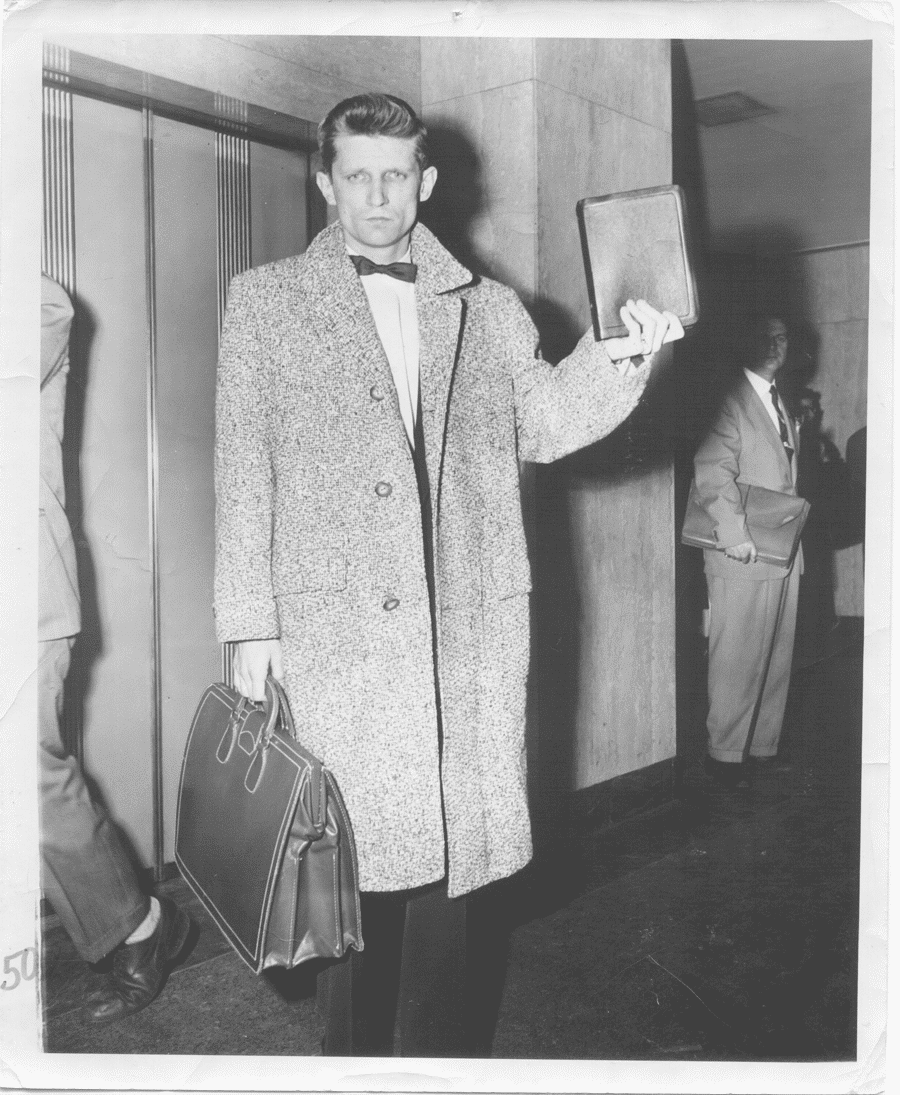
Figure 1. David Wilkerson in NYC 1958. Source: teenchallengeusa
In February 1958 in Philipsburg, Pennsylvania, an Assemblies of God (AOG) minister, Dave Wilkerson, our second pilgrim in the story, does hear the voice from the newspaper, what he would describe as the ‘Call of God Moment’. It calls him to reside in New York City for a few years, initially to try and convert the alleged murderers of Michael Farmer. On Tuesday, 8 July 1958 Wilkerson got his inspired moment with a dashing-but-less-than-convincing court room performance at the opening stages of the trial. Undeterred and waiting on God’s guidance, the turning-point came with the conversion of Nicky Cruz at the St Nicholas Arena Rally, the first of a series of revivalist meetings that Wilkerson organised with several AOG ministers on Manhattan Island. Within two years the mission was becoming a permanent entity. On Saturday, 10 October 1959, a meeting of 20 Manhattan Assemblies of God pastors, led by Reg Yake and Frank Reyolds, was held at the Manhattan Glad Tidings Tabernacle. Note, the ‘Manhattan Glad Tidings Tabernacle’, because later in the story we will find the Brisbane Glad Tidings Tabernacle as another central marker. The 1959 Manhattan meeting agreed to organisational support of Dave Wilkerson, the start of the Teen Challenge (“Teen Age Evangelism”) movement. Dave Wilkerson dates his ‘Vision for the beginning of the Teen Challenge Ministry’ on Thursday, 15 December 1960.
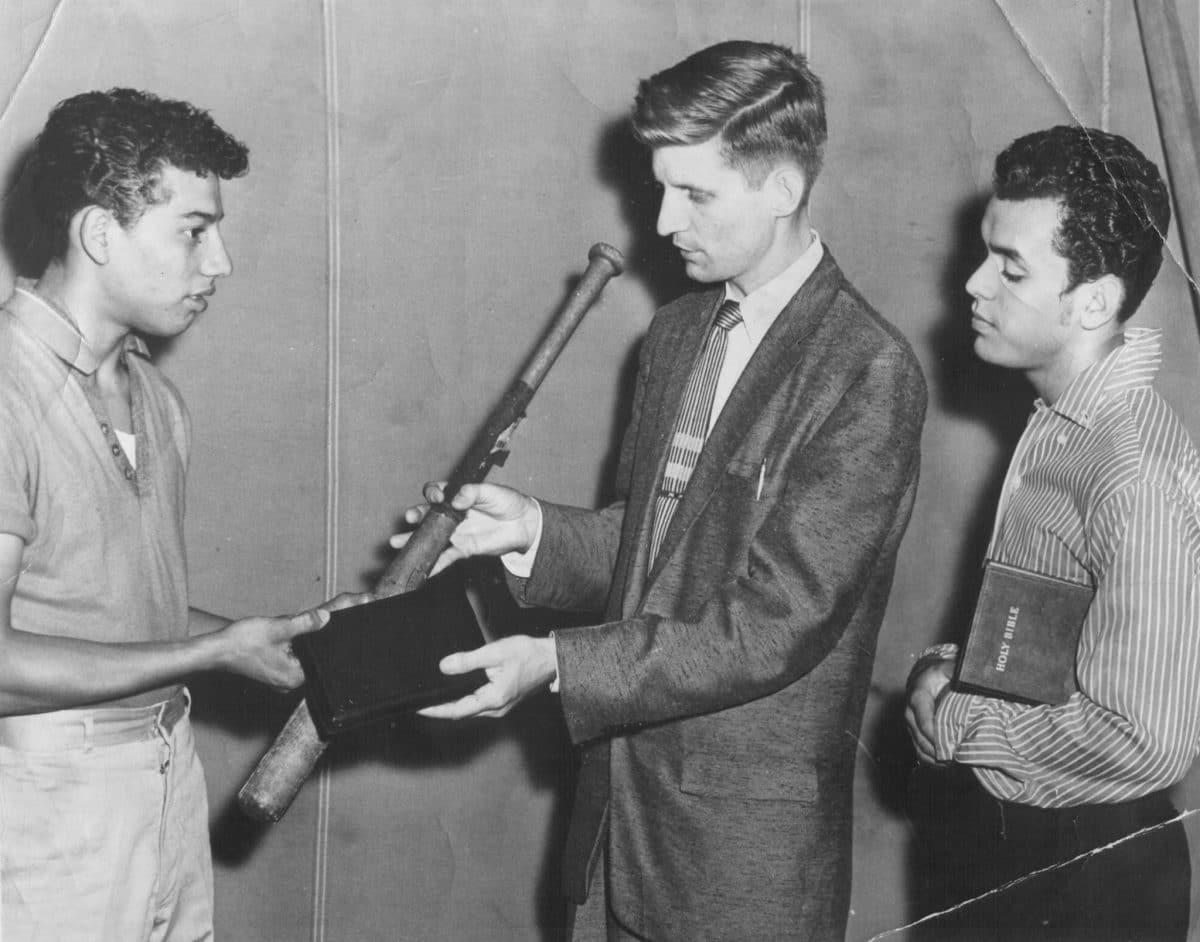
Figure 2. Dave Wilkerson and the New York Youth Gang Conversions, 12 July 1958. Source: teenchallengeusa
The Days of “Teen Challenge Inc. Antecedence.”
Across the Pacific Ocean in the same set of years something else extraordinary was happening. In his early years in Australia, aged 14 to 16, Charles had a heighten anxiety. He felt that he had no experience of faith. Despite his strong theological environment – an immigrant Dutch family of the Reformed faith – he did not believe he was a Christian. The youthful resolution of such anxiety came in the commitment to Jesus Christ at the Leighton Ford staging of the 1959 Billy Graham Crusade at Milton Tennis Court. Aged seventeen, Charles quickly became the youth leader at the Reformed Church in Toowong.
The year 1959 saw the opening of the first world Teen Challenge facility, at 416 Clinton Avenue, Brooklyn, New York City. During year, Wilkerson’s sister, Ann Wilkerson, also organised the first coffee houses of the Teen Challenge movement. In January the following year, came the first training session of Teen Challenge at Brooklyn of 20 students from Central Bible College, Springfield, Missouri, and Lee College, Knoxville, Tennessee. Meanwhile Charles was finishing his apprenticeship training course at the Central Technical College and work at Jackson & O’Sullivan. Upon that completion, Charles, and his wife and dedicated co-collaborator, Rita, became welfare workers-missionaries with the Presbyterian Church, working amongst Indigenous communities in Western Australia. It was a big move and marked a pathway away from the ethos of the Toowong Reformed Church.
Charles and Rita had begun their missionary work amongst First Nations in Brookton, Western Australia, working in general welfare, pastoral care, and preaching. In these same few years Dave Wilkerson was building something much bigger than a ‘convent-type’ recovery centre for drug addicts seeking conversion and rehabilitation from a drugged life. In June 1962 Wilkerson had his vision for the Rehrersburg Center, Pennsylvania, the first Teen Challenge training center for men. In that year Charles had begun a full-time ministerial training course at the Reformed Theological College, Geelong, Victoria, Australia; leaving behind Presbyterian work amongst Indigenous communities in Western Australia.
When on 28 February 1963, which saw the publication release of Dave Wilkerson’s The Cross and the Switchblade, Charles was working as a part-time high school teacher at Geelong Junior Technical College, teaching English and Social Studies. A major theme in this historical story is the tension between education and publicity. The history is that Friday, 5 March 1965, building on the initial publication success among American Christian communities, the Teen Challenge organisation was placed on the global map. It is the release date of the edition of Life magazine which had the article profiling Dave Wilkerson and the Teen Challenge New York work. Any grand enterprise is the accumulation of the educative experiences, of those many humble persons and the fanfare seen in glossy publications. On the ground, the year 1965 saw the opening of the first Teen Challenge facility for a women’s program, at 380 Clinton Avenue, Brooklyn, New York City. And on this side of the Pacific Ocean, Charles finished his teaching at Geelong Junior Technical College, and in 1967 was awarded a Th. Grad. (Hons.) degree from the Reformed Theological College. Without the publicity of 1965, this story would have been impossible, however, the myth of Teen Challenge sadly clouds the power of the story. It is the revivalist error where the thinking is ahistorical – far too immediate and conflating events and lives of many persons.
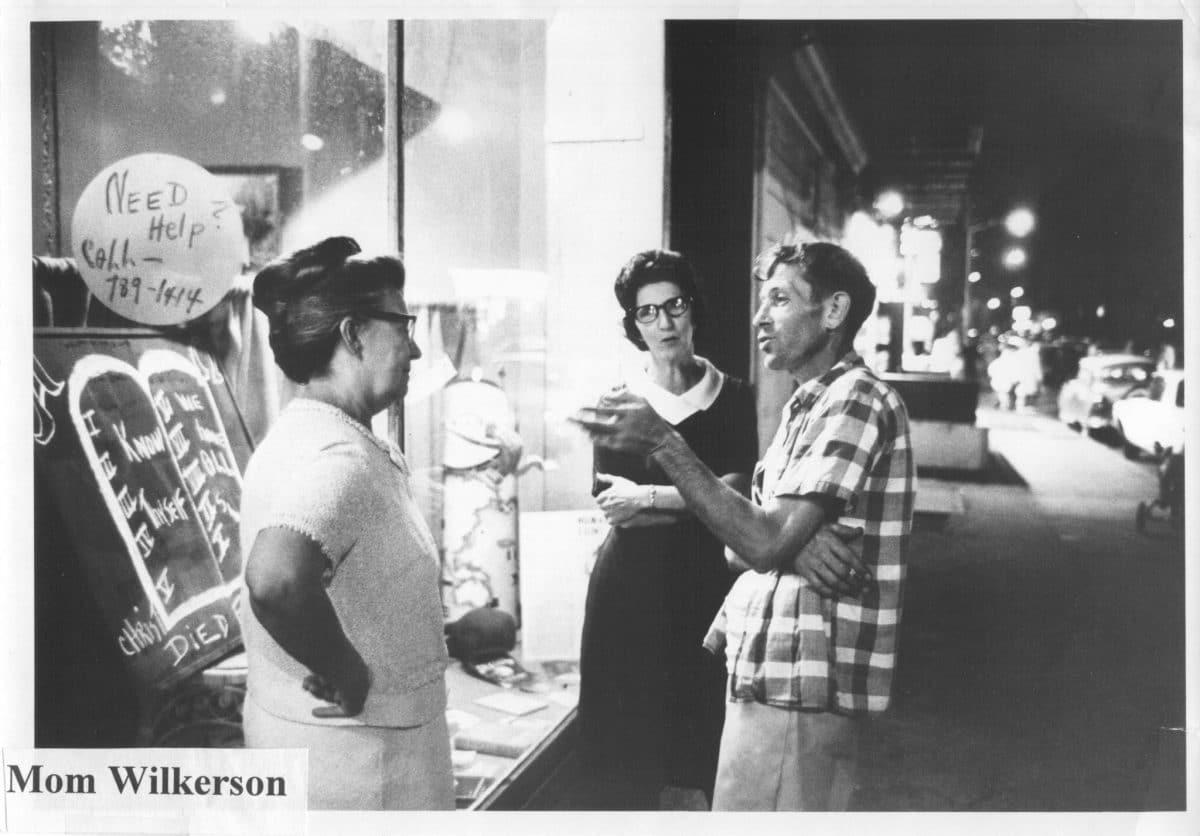
Figure 3. Ann Wilkerson and the Teen Challenge Coffee House Ministry, 1960. Source: teenchallengeusa
The year 1967 is when ‘Jesus Movement’ made its earliest impetus. The Jesus Movement was originally on the West Coast of the United States in the late 1960s and early 1970s, and simultaneous became global with the help of daily international media reports. The movement, however, was one among several parallel developments happening in the same years, globally in churches and parachurch organisations. The Charismatic Movement had already been in full swing in the United States for about a decade. In Australia the Jesus Movement and the Charismatic Movement overlapped, often involving groups of the same persons. The difference was that the Jesus Movement centred on the idea of a socio-political Jesus from the Gospels of compassion, as opposed to that of westernised prosperity. The Charismatic Movement was more socio-politically conservative and tended to be kept in the confides of conventional Neo-Pentecostal churches or parachurch organisations. An overlap was maintained up to circa 1975. After that time tensions between the Evangelical Left and Evangelical Right broke the informal compact. Neo-Pentecostal churches were driven by the Prosperity Doctrine and the American Revivalist Business Model, as seen in the Megachurch growth of the 1980s and 1990s.
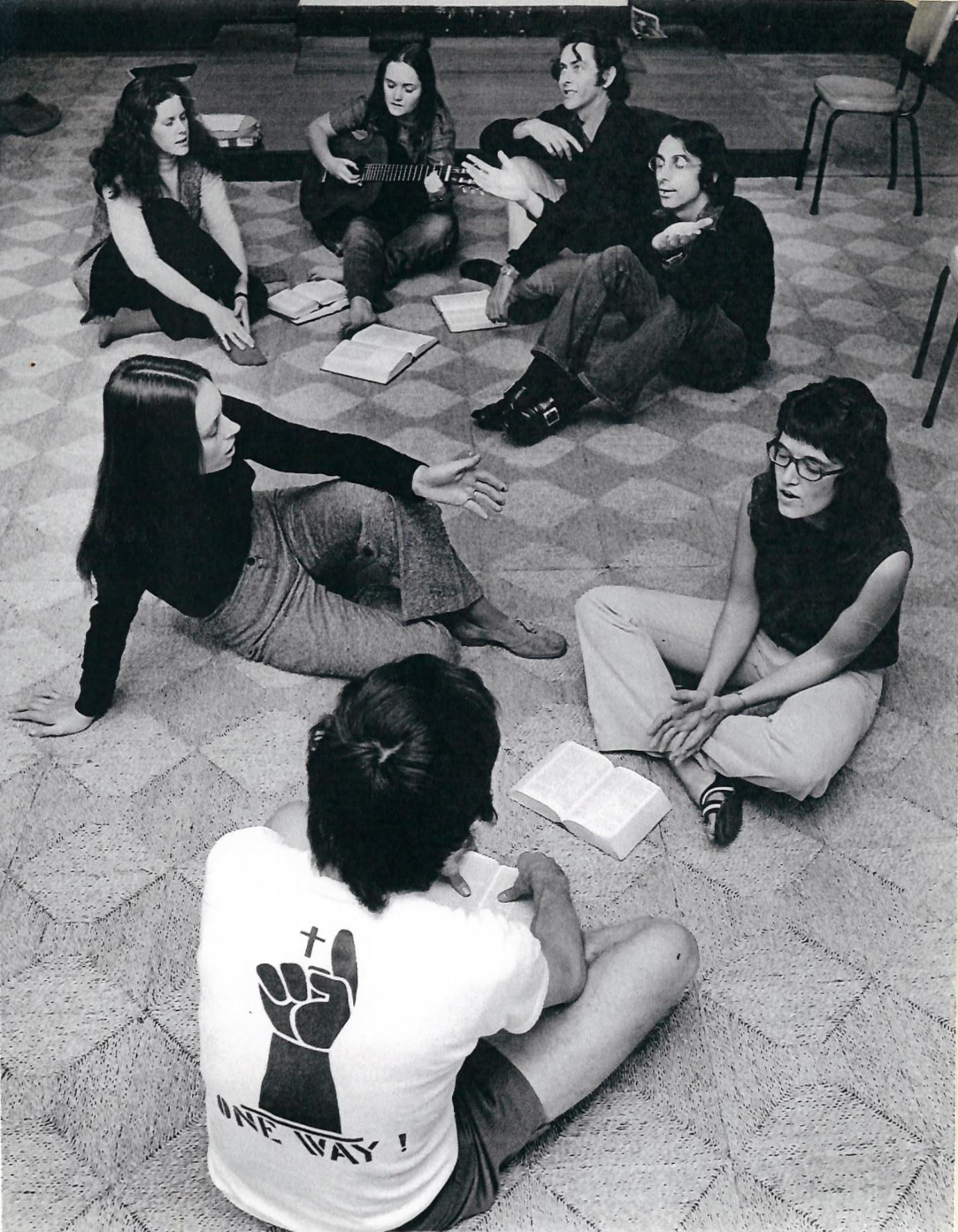
Figure 4. Charismatic Renewal in the Jesus Movement Setting. Source: Teen Challenge Inc. (Qld)
In 1967, just as these charisma experiences were beginning for Charles and Rita, Charles completed a course in linguistics with the Summer Institute of Linguistics at Emmanuel College, at The University of Queensland. Briefly, Charles and Rita were looking for new beginnings, moving between Queensland and Western Australia for about two years. In 1967 Charles had been appointed Probationary minister at Broomehill, Western Australia, for the Reformed Church, but the relationship broke down between the Ringmas and the conventional Church. Charles and Rita’s thinking had changed through their experiences of the Holy Spirit, that is, the spirituality via the beliefs in the historical Jesus and historical charisma. A spirit of change did not sit at all well with conservative Reformed theology of the ahistorical-thinking conventional churches. History is change, not frigid dogma.
In 1968 the movement of the Holy Spirit brought Charles and Rita to their new beginning in the City of Brisbane. Charles with a close friend begun a street ministry with a Drop-In Centre at the former convent in South Brisbane, known as the Good News Centre. By the following year, Charles, burnt with the unpleasant fallout in the Reformed Church, ensured to secure the support from the local Catholic and Methodist churches. As a result, Charles gained the necessary profile as ‘the director’ of the welfare agency, Good News Centre, working with alcoholics in South Brisbane. The friendship of Ivan Alcorn and the connection into the Lifeline ministry of the Methodist Church provided Charles with security of funding and reputation. Plans were put in place in Lifeline late 1970 for Charles to take on a much larger enterprise. For most of 1971, Charles was funded by LifeLine to undertake a ‘Drug Rehabilitation Study World Tour’, studying the impact of the illegal drug problem on young people and programs to repair the damage. His tour took him to the Netherland, the United Kingdom, and the United States of America. In the United States Charles was introduced to the Teen Challenge programs in New York, Philadelphia, San Francisco, Los Angeles.
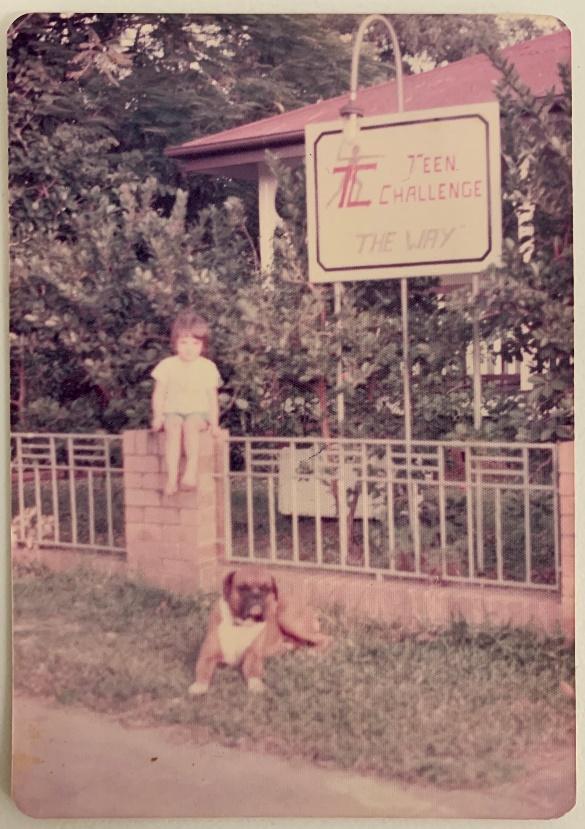
Figure 5. The Way, or The Good News Centre, with Mark Lane and faithful friend, Carlos. Source: Teen Challenge Inc. (Qld)
The Beginning of Teen Challenge Inc. Australia
On his return to Brisbane, Queensland, Charles wasted no time. In December 1971 the processes began, with LifeLine’s support, creating Teen Challenge (Brisbane) Incorporated, with Charles as its Australian founder, coordinator, and executive director. A few months earlier, conversations between Charles and Rev. Bob Barnett, the Philadelphia Director, and the national Executive Director Don Wilkinson, had secured the initial plan. Charles stated that he would be recommending, in his report to Lifeline, to adopt the Teen Challenge model. The two events: 1) the securing the agreement with the USA Teen Challenge organisation for the brand and adoption of their programs, and 2) the guiding hand of the LifeLine Queensland organisation, created a global opportunity on a local setting.
By the end of 1971 “His Place” Coffee House, Elizabeth Street, Brisbane City, as a Teen Challenge community outreach had been put into place. ‘The Way’ became Teen Challenge’s more intensive support service, and their home base; a re-development of the Good News Centre. With LifeLine’s main service being phone counselling, a 24-hour hotline and counselling facility was set up for Teen Challenge’s Elizabeth Street facility.
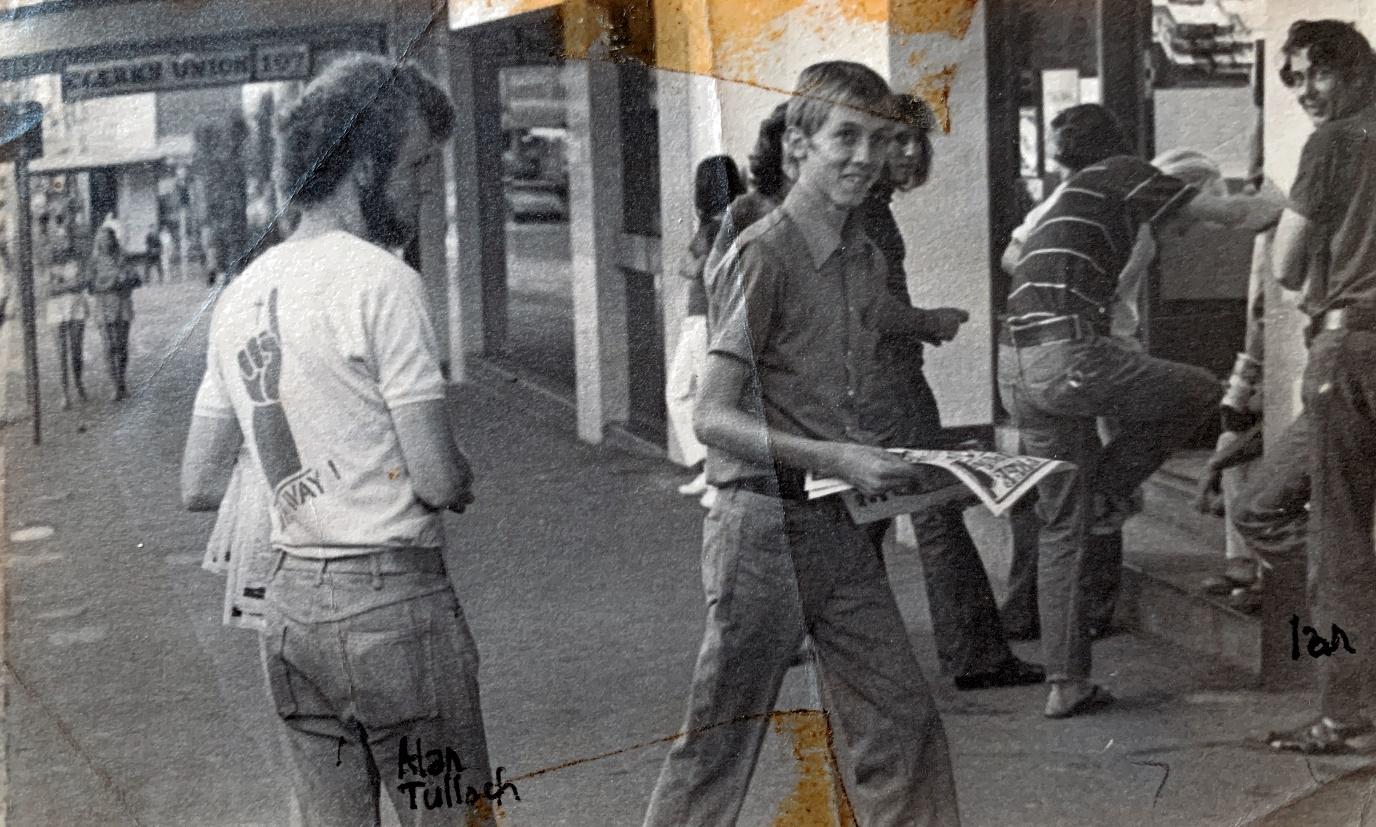
Figure 6. Entry to His Place, Elizabeth Street, Brisbane City. Source: Teen Challenge Inc. (Qld)
Within a year Teen Challenge Inc. was an established entry on the local church and parachurch scene. In October 1972, the organisation had completed the Cooroy State High School I.S.C.F. Outreach. In December (9-10) the Jesus People Secondary School Camp, Caloundra, was held. In the first few months of operation Teen Challenge leaders were coming to the fore. In February, John Healey and Jenny Deeth were appointed among the first official Teen Challenge workers. In May John Healey began his training for two and half months at the San Francisco Teen Challenge Center.
During the first year of activities, the Good News Centre formally rolled over into the Teen Challenge organisation. Work began on creating organisational infrastructure and a board, as well as registration. Incorporation of Teen Challenge in Queensland was achieved. This was a process to find balance between the enthusiasm of the ‘Jesus Movement’ and creating an organisational structure which would keep the enterprise positively grounded. The Jesus People Secondary School Camp spoke to the former. Part of that popularist thinking was the axillary groupings inside the multiparous Jesus Movement, which included Neo-Reformed theology, or the antecedent form of Christian Reconstructionism. In the 1980s it came to bite hard – negatively – on the Jesus-oriented compassionate faith within the organisation. As such, there was a naive enthusiasm for the early writings of Os Guinness and Francis Schaeffer. The populist theology propagated a Christianised version of the outdated Oswald Spengler’s thesis (‘Decline of the West’). In July 1972 Chris Adams, a soon-to-be staff member, studied directly under Francis Schaeffer in L’Abri, Switzerland.
The year 1972 was significant for the organisation for several reasons. During the year came the American cinema opening of The Cross and the Switchblade film in 5,000 theatres. The year also saw the opening of the first Teen Challenge Outreach Centre outside of Queensland, at 87 Macleay Street, Kings Cross, Sydney. Charles and Rita toured North Queensland, spending time in Cairns and Kuranda. The plan was to extend the organisation across populated areas of Queensland and where community drug problems were apparent. Although most of the organisation’s activities resided in South-East Queensland, important bridges were extended to the rest of Queensland. Following the Outreach and Counselling Training Seminar in Brisbane during January (15-19) 1973, Jesus to the Surfies Witness Camps (“Temporary Communes”) were simultaneously held (20 January-10 February) in the Gold Coast, Bribie, North Coast, and Cairns. A second Brisbane Outreach and Counselling Training Seminar was held in February (12-27). There was within the organisation, for these first few years, a stronger commune ethos. Several staff members lived together in the former South Brisbane convent (‘Good News Centre’). At the lived-in centre, a 10 cents-a-week periodical was produced, Jesus Paper. Copies were distributed in March at the Nimbin Age of Aquarius festival.
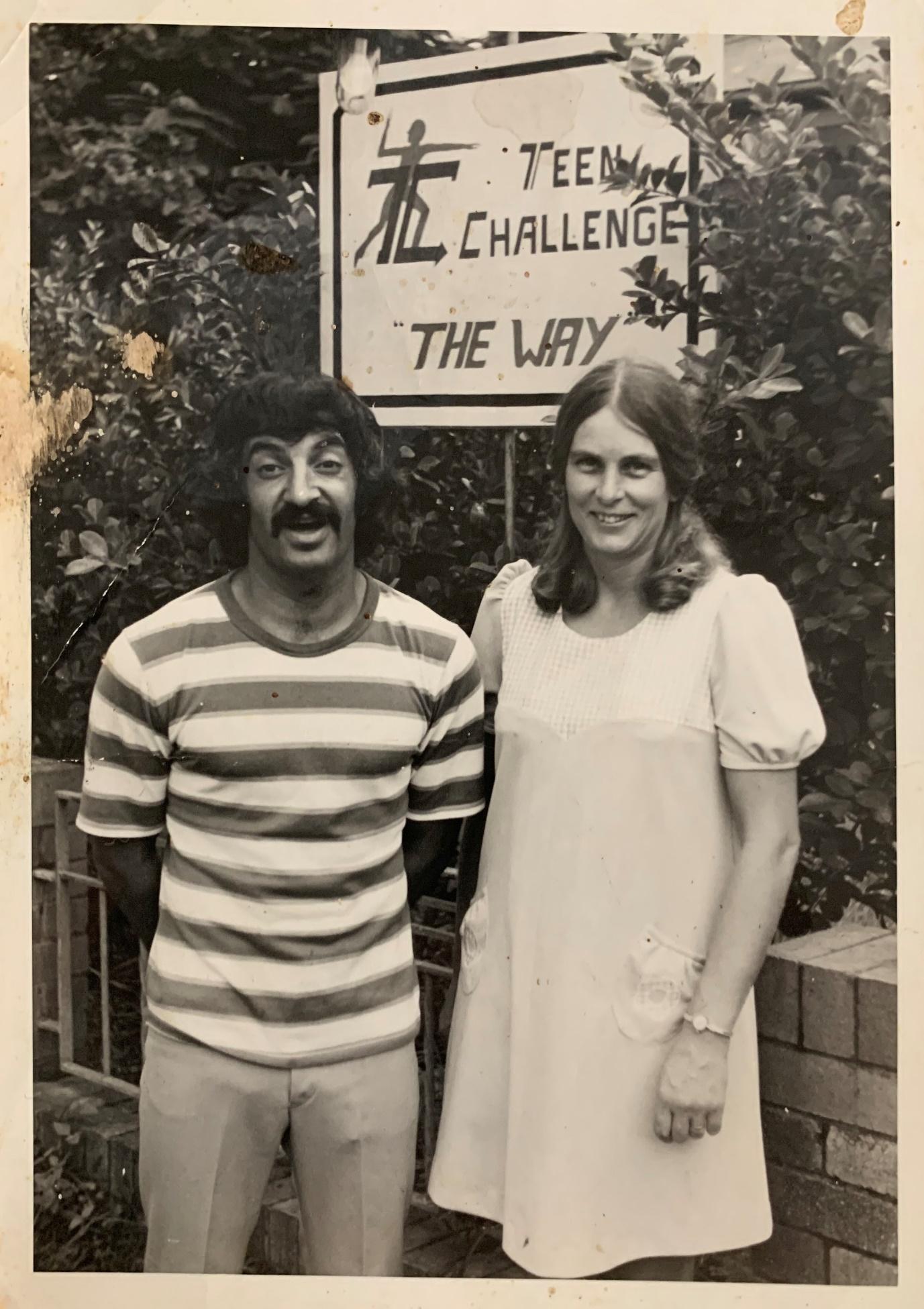
Figure 7. Peter and Dot Lane outside ‘The Way’. Source: Teen Challenge Inc. (Qld)
With John Healey appointed Teen Challenge Rehabilitation Director in January 1973, new staff members and volunteers joined the organisation. Peter Justice begins work at Teen Challenge, Brisbane, in January. Cathy and Greg Job joined in February. A major boost came in April when De Vore Walterman, Executive Director, American National Council for Prevention of Drug Abuse, spoke at a series of Drug Awareness meetings. Three talks spoke to what was occurring in Teen Challenge (Queensland) Inc. and helped to connect with the wider audience working in health and social work; with the topics as:
- “The Drug Sub-Culture and the Jesus Movement” (Thursday, 20 April, Lecture Theatre No. 1 Physiology, University of Queensland);
- “Causes for Drug Abuse. A Deeper Problem than Addiction”, and “The Drug Syndrome — Drug Abuse and their Effects” (Saturday, 22 April, Jacaranda Room, The Canberra Hotel, Brisbane City); and
- “The Big Marijuana Lie” (Monday, 24 April, Jacaranda Room, The Canberra Hotel, Brisbane City).
The title of the last talk expressed the conservative view that Teen Challenge organisation adopted, but it was in-line with the conventional view of the time, that soft-drug habits were the direct gateway to the hard drug habits. In 2021 medical views on marijuana are still contentious.
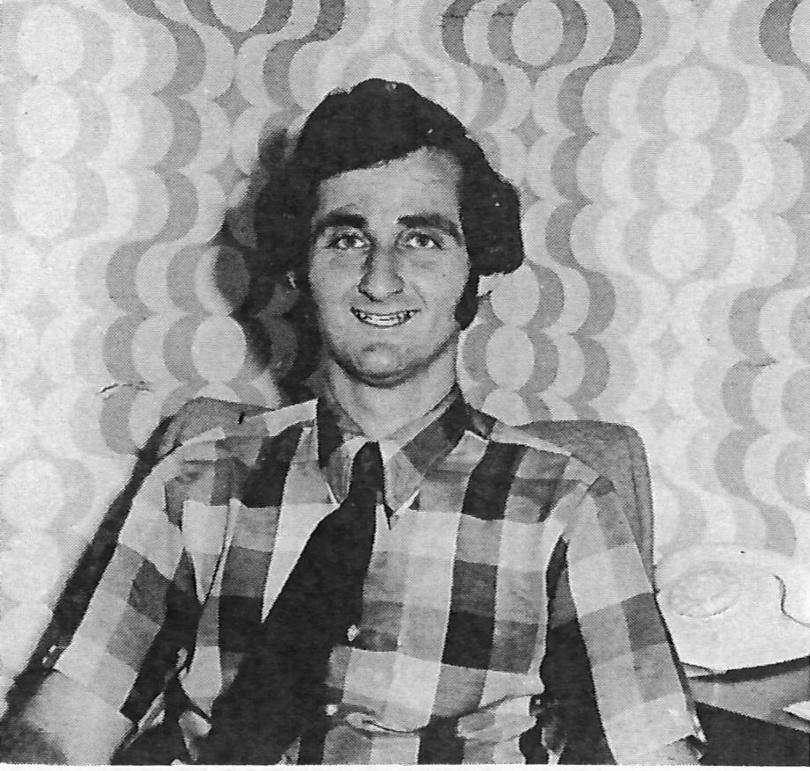
Figure 8. John Healey, circa 1977. Source: Teen Challenge Inc. (Qld)
By the end of 1973, across the nation, Teen Challenge was considered as one of the first-line alcohol and drugs support organisations with leading expertise. There were some reservations among members of the medical fraternity who had strong skeptical views of the Christian therapeutic model. In Queensland, though, outright opposition was the minority among the skepticially-inclined population. Globally, the Christian therapeutic model had been too well-established. Although medical opinions were important, the organisation’s main audience were churched youth while making connects with unchurched street youth. This theme was expressed at the 1973 Christmas “Accent on Youth Camp”, Beulah Heights, on the North Coast (25 December 1973-1 January 1974).
By the end of 1974, as the Jesus Movement started to wind-down, the organisation became more focussed on the drug prevention and rehabilitation programs. In that year the organisation took it next major step. The former convent site was sold, and a residential rehab centre was established in Enoggera. In previous years, the rehabilitation program was run in the South Brisbane centre and in the homes of staff members, such as the Ringmas. Greater formalisation of the program came from Charles and Rita with the new staff members Peter and Dot Lane. Around 1976 the first registered Rehabilitation Home for Teen Challenge Inc. at 106 Simpsons Road, Bardon, opened, and the program grew as a therapeutic family model.

Figure 9. Teen Challenge Residents having a Night Out with Pete and Dot. Source: Teen Challenge Inc. (Qld)
Beyond the Americanised Jesus Movement but Following Jesus of the Gospels
For the next several years, the organisational structure continued to improve, and services expanded with new ‘detached’ street workers, continuation of the 24-hour telephone service, the drop-in centre for counselling and support, the rehab program and drug prevention talks in schools. In 1975 new staff members Gary and Lorna Swenson opened the Teen Challenge Girls Home in Red Hill. The organisation continued to strengthen links with churched youth, particularly by informal social interactions during fund-raising events. An example was the Andrae in Concert, at Festival Hall, Brisbane City on Saturday evening, 4 December 1976. By then Charles had begun his B.A. degree studies part-time at The University of Queensland, majoring in Sociology and Studies in Religion. The education would strengthen the leadership in the organisation. In only a few years ahead, with the guidance of supporter churches and parachurch organisation, social workers were employed or interned into the work. Education would also challenge the organisation. Several members in the organisation were taking on education, while other members retained a conservative and populist form of quiet skepticism. Fundamentalist in disposition, Queensland Protestant churches had long been plagued with congregations who dared not openly push their hard biblicism but worked against the “liberal” church leadership in covert “spiritual warfare.” In late 1977 it became a more open and political form of ‘warfare’.
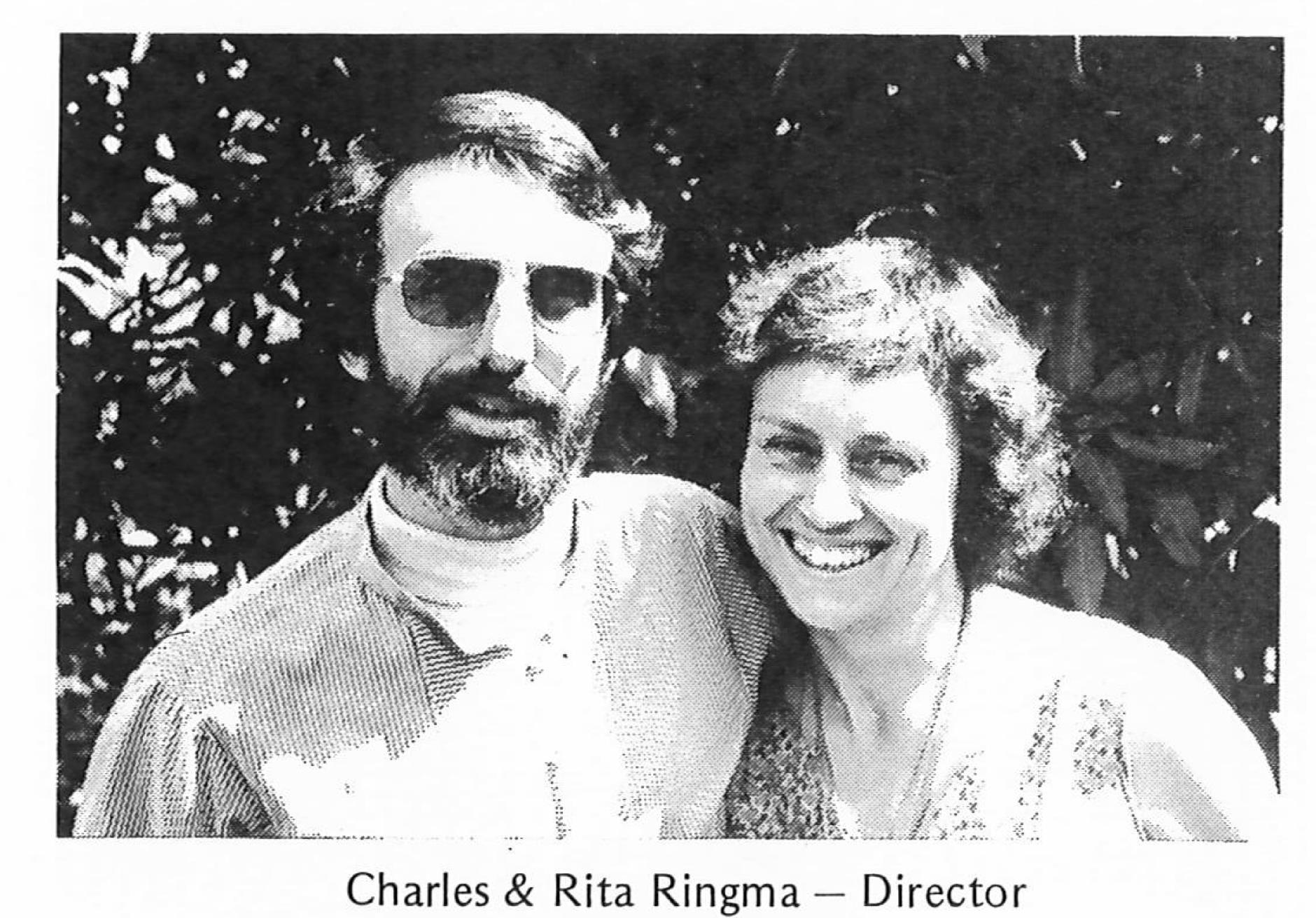
Figure 10. Charles and Rita Ringma, circa 1977, at the time of the Queensland Christian Churches’ Crisis of Faith. Source: Teen Challenge Inc. (Qld)
Charles and the Teen Challenge leadership came to realise, through ‘the word on the street,’ and through Ray Whitrod, the Queensland Commissioner of the Queensland Police Service, the extent of the corruption of the Police Force. Terry Lewis, the Assistant Commissioner, and his friendship with the extremely naive or corrupt Premier of Queensland, Joh Bjelke-Petersen, set in motion a series of actions which would be infamously historic for Queensland. With Whitrod resigning in protest in 1976 at the corruption which by then endemic, Bjelke-Petersen appointed Lewis Commissioner. The disgraceful chapter of history progressively worsen until the Fitzgerald Inquiry (1987–1989) and the abortive trial of Bjelke-Petersen (1991-1992). Charles and the Teen Challenge leadership, however, were ahead of the moral curve and had originally made Whitrod aware of the intelligence that they were getting from the streets, of police support and participation in criminal activities across the illegal drug scene. Charles and other Church leaders had meetings with Bjelke-Petersen to expose the problem of police corruption, but the Premier only promised to look into the matter and had clearly dismissed the concerns.
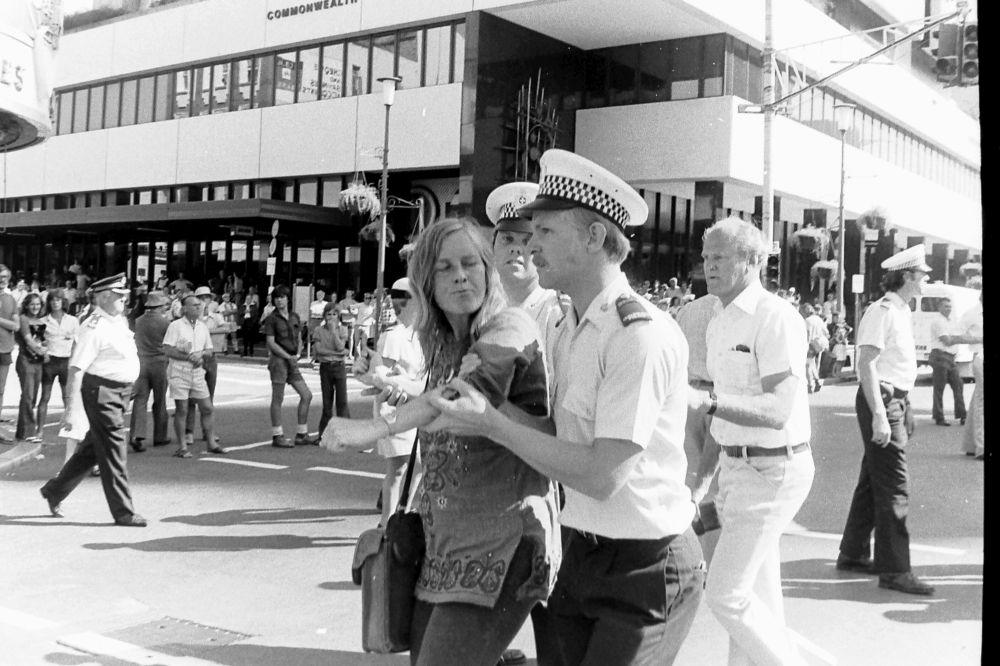
Figure 11. Street Demonstrations and Police Arrests in 1977, Protesting Against a Corrupt Police Force and Government. Source: State Library of Queensland
In late October 1977, matters came to a head. Charles, among the “liberal” Church leadership, participated in the Right-to-March Street demonstration on Saturday, 22 October. It was not a lightly considered matter, coming with the National Party’s anti-democratic strategy of banning street marches, and during street violence from Queensland Police. The act of defiance was followed, on Wednesday, 26 October, in the publication in The Courier Mail, Queensland’s main daily, with statements from 16 Church leaders on the Right to March as a democratic proper position. Among the statements to condemn the government were those of Charles, and his friend, the state’s leading Christian ethicist, Noel Preston. It was too much for the conservative and too-conventional members of Teen Challenge and the supporter churches. Charles was roundly criticised for a brief time. The difficulty for the reactionaries was that they lacked the sociological and political language to justify the government stance.
The ‘unpleasant’ (a common word from Christian conservatives) episode appeared to be brief and the damage to the organisation was fleeting. Even in 1977, as tensions mounted, the organisation remain financially stable, so to see the acquisition of the Rathdowney Farm as a retreat facility. By April the following year, the conservative-liberal tensions had been completely forgotten. On Wednesday, 12 April, the Teen Challenge Ladies Luncheon had its guest speaker, Lady Phyllis Cilento, at the Five Continents Room, 5th Level, Lennons Plaza Hotel. The Nationalist establishment had forgiven Charles.
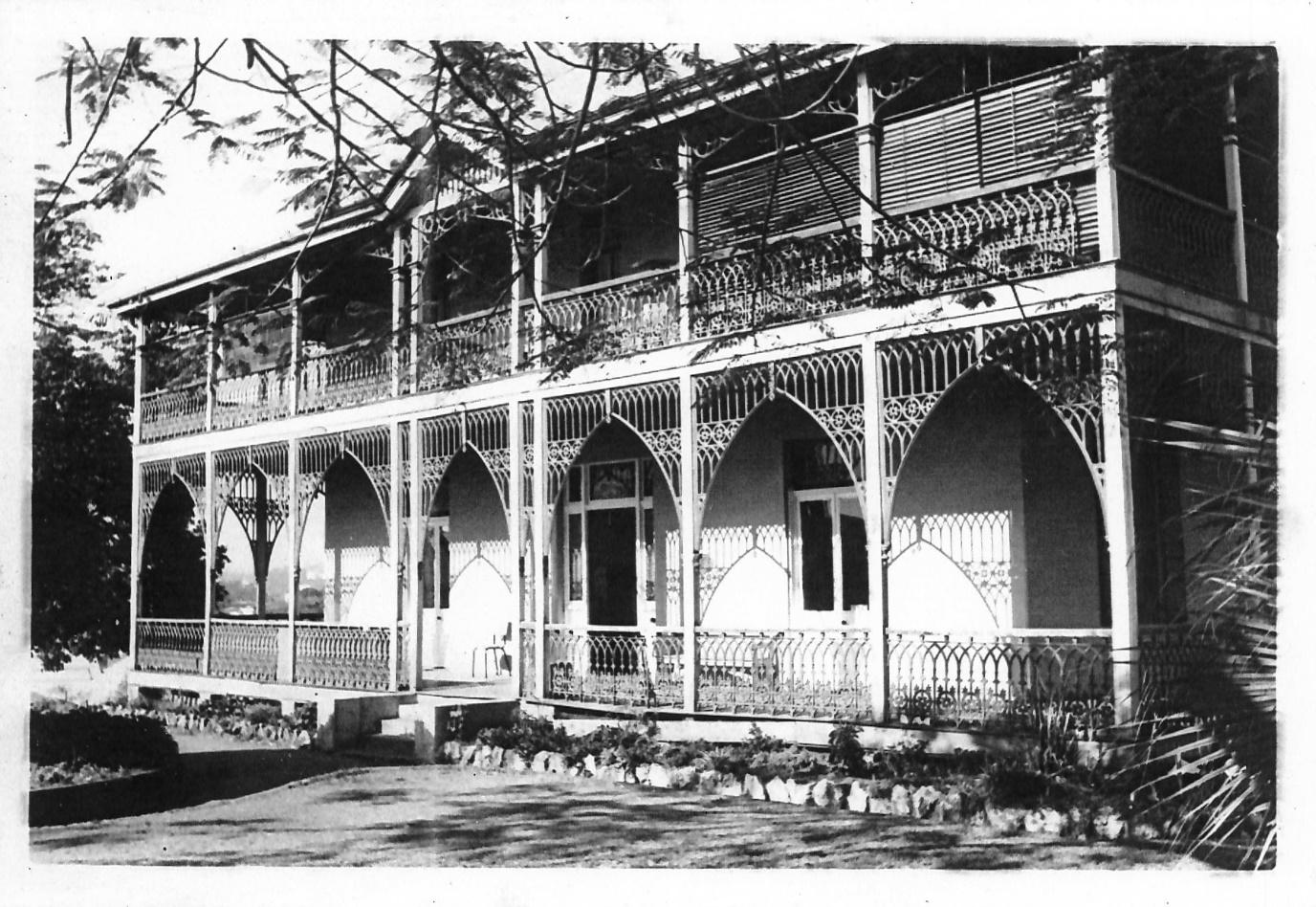
Figure 12. Primmer Lodge. Source: Teen Challenge Inc. (Qld)
The conservative Board members somehow patched up the relationship with the Bjelke-Petersen government. Bjelke-Petersen, himself ‘a devout Christian’, would have wanted to benefit the Teen Challenge organisation, to blunt the criticisms coming from the Uniting Church Queensland Synod. As a result, funding for the organisation greatly improved and the organisation was able to expand facilities. On Saturday, 13 May 1978 saw the opening of Primmer Lodge at Taringa, the emergency accommodation and work program, with guest of honour, Minister for Welfare, John Herbert. A few months later, in July, Hebron House, the crisis accommodation (up to two nights) facility at 356 Milton Road, Toowong, was opened.
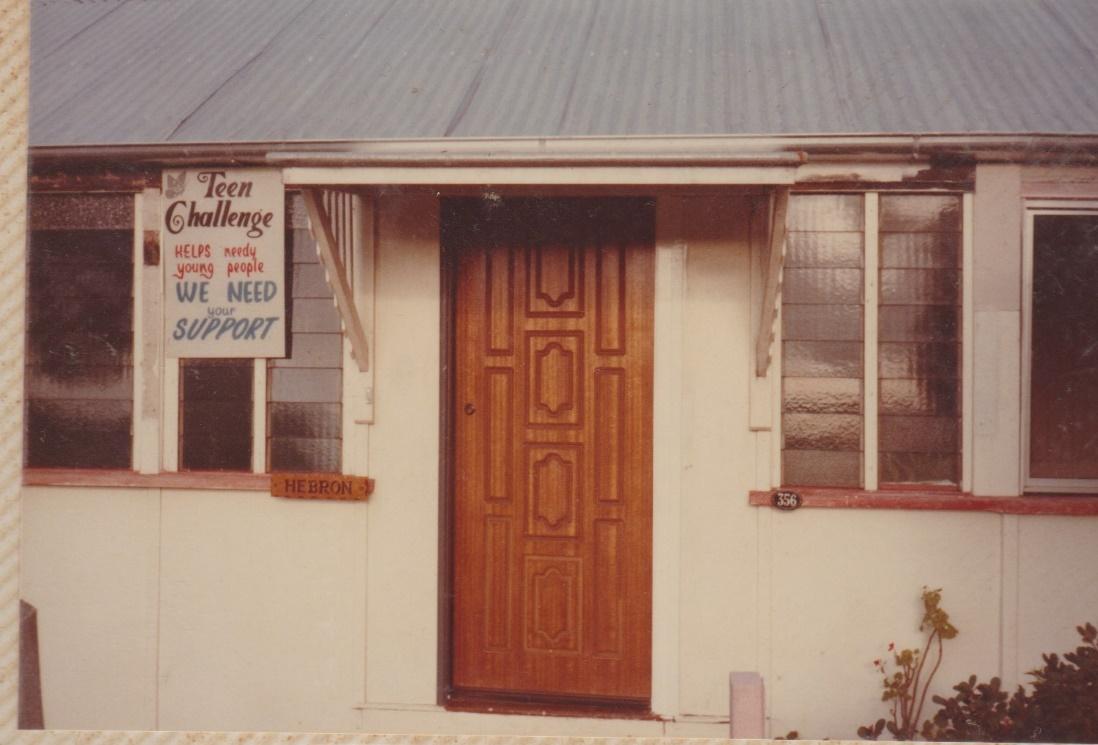
Figure 13. Hebron House, Milton. Source: Teen Challenge Inc. (Qld)
By 1978, the attitudes in the medical fraternity were soften further, and Charles began part-time work as a clinical teacher in social medicine and drug abuse, with the Medical School, The University of Queensland. It was not the only institution which had difficulty with the compassionate view of Jesus of the Gospels. In the same year Charles pioneered Jubilee Fellowship, an inner-city community and interdenominational church, as its part-time minister. Charles came to the spiritual enterprise reluctantly. His original commitment in the organisation was to direct graduates from the rehab program to the established local churches. However, these graduates came to Charles to say that, as inheritors of street culture, converted or not, they were made very unwelcomed in the local churches. Jubilee Fellowship became a necessary spiritual home.
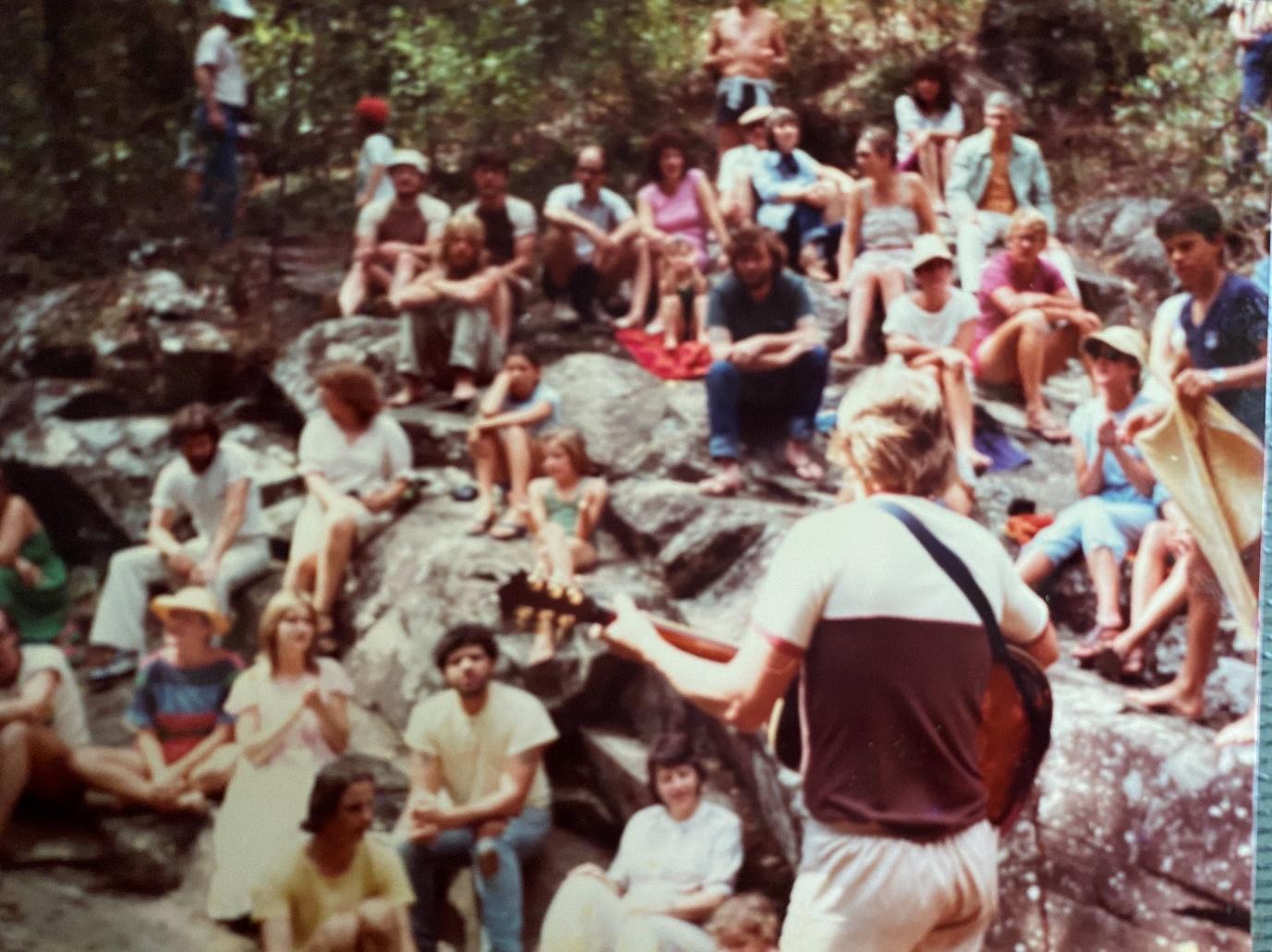
Figure 14. The Birth of Jubilee Fellowship. Source: Teen Challenge Inc. (Qld)
The Ringma Reformation of Teen Challenge Inc.
In 1980 the organisation was increasing its professionalisation. In May the Teen Challenge Counselling Team was officially formed under coordination of Harvey Whiteford. At the same time the Rehabilitation Appeal was launched. The Placement of Adolescents in Families (PAF) Program was also designed by Charles Ringma during the year. What capped off the fresh push of re-development was the National Teen Challenge Diploma Training Course (one year long). Education became a major function in the organisation and Charles took on the role of the National Director. Social worker Brendan Scarce was appointed the full-time chaplain and played a much larger leadership role in the organisation (1981-1984). The national training course originally drew interstate students to Brisbane, but eventually the national course expanded to include interstate Teen Challenge’s locations. By the end of 1980 Charles had received a 4BC Golden Award for Excellence for community service through the work of Teen Challenge.
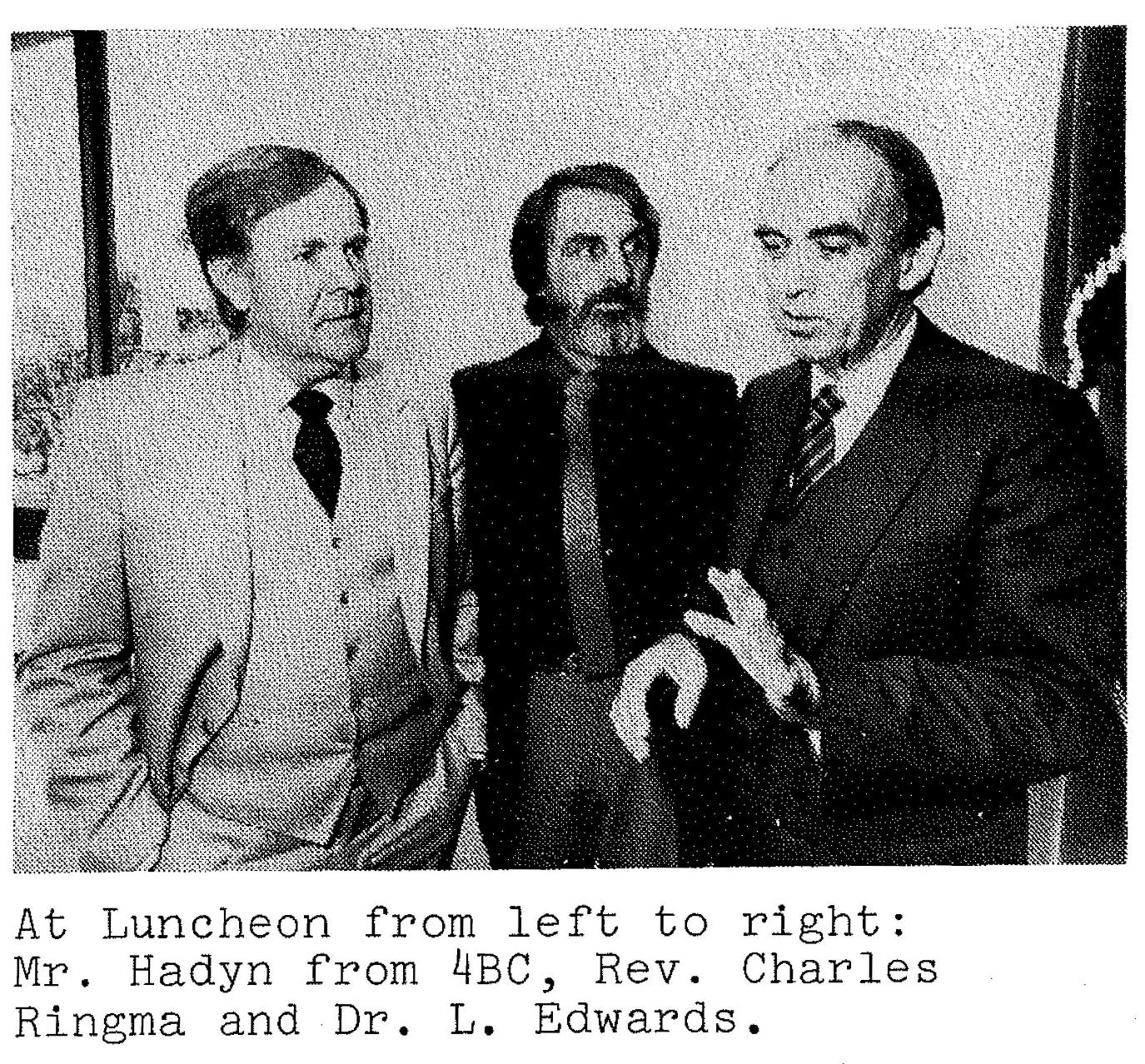
Figure 15. Charles Ringma and the Conservative-Liberal Community Connections, circa 1983. Source: Teen Challenge Inc. (Qld)
The following year marked Teen Challenge 10th Year. A Reunion Banquet was held, with guest speaker Sonny Arguinzoni from Victory Outreach Los Angeles, at the Greek Community Centre, South Brisbane (18 September 1981). It was not only a time of looking back, but the year also marked the beginning of Koinonia’s long term lease. Koinonia, a heritage home on the banks of the Brisbane River at Graceville, was the new twelve bed residential rehabilitation centre. It was a significant place for the organisation. With a residency over the short four years (1981- August 1983) of ‘clients’ and staff members, as well regular guests, who crossed-over the organisation and the life of Jubilee Fellowship, Koinonia was the significant hub of the organisation. Among the staff members living on the site were Neil Paulsen, Sue Paulsen, Roy Calic, Lyn Calic, Margaret Robertson, John Moutou, Mike Bellas, Mike Power, Chris Cummings, Neville Buch (the author here), and many others.

Figure 16. Koinonia Drug Rehabilitation Home, Graceville. Source: Teen Challenge Inc. (Qld)
The profile and reputation of the organisation was ever increasing in these years with a larger public engagement. On Saturday, 30 October 1982, Ted Watson, Pat Noller, Charles Ringma, and Peter Lane held a major One-Day Seminar on Sexuality and Today’s Christian. These types of public events strengthen the connections with local churches. The following month Greg Passmore, a well-known local Baptist pastor, spoke at the Teen Challenge and Jubilee Fellowship Camp (5-17 November) at the Neranwood Conference Centre. During the year Charles received a Certificate of Award from the Bardon Lions Club in recognition of outstanding community service.
By the following year activities were doubling. In January saw the first 12-month PAF course held by the Teen Challenge Training Institute (previously the scale was smaller and less formal). Camps continued such as the Teen Challenge Camp at Margate on the 10-13 June. Major public seminars continued, such as the “Outreach to Troubled Youth”, the Teen Challenge Training Institute Seminar at the Bardon Professional Centre (22-23 July). During the year Charles became a part-time lecturer at Commonwealth Bible College, Katoomba, New South Wales, teaching in Youth Ministry. And yet again, Charles and the organisation were awarded, this time with Charles receiving the 1982-1983 Lions District Governors Community Service Award for the work of Teen Challenge.
In July 1984 Charles retired as Executive Director of Teen Challenge (Brisbane) Incorporated, and, in the following month, Jean-Claude Boulenaz formally became new Executive Director. Seemingly as to mark the end of an era, on 21 September 1984, Leon Patillo performed his concert, at Chandler Weightlifting Theatre, to a generation of young people who had lived through the pop culture of the 1970s and the first half of 1980s. Paralleling the way the year 1975 had closed a chapter in the life of the organisation, the year 1984 marked another ending.

Figure 17. Charles and Rita Ringma, 1984. Source: Teen Challenge Inc. (Qld)
Although no longer part of the Teen Challenge leadership team, for the next forty years, Charles’ post-TC activities would filter into the maturing process of the organisation. In 1984 Charles finished his part-time work as a clinical teacher with the Medical School, and began his post-graduate degree pathway, part-time, at The University of Queensland majoring in Sociology and Studies in Religion. He would soon finish the M.A. (Qual.) thesis on “Towards a Sociological Approach to the Study of Early Christianity.” It was a sociological study as an outcome of the Evangelical radical discipleship model, one that had been applied in Teen Challenge and Jubilee Fellowship. Charles would continue to develop a body of theological knowledge which greatly drew on the historical experiences of Teen Challenge. It feed into Jubilee Fellowship, rather than the post-1985 Teen Challenge. In 1986 Charles completed his Batchelor of Divinity degree at the Reformed Theological College at Geelong with a thesis on “A Critical Evaluation of the Ecclesiology of Dietrich Bonhoeffer.” In the same year he also began his Master of Literature Studies degree at The University of Queensland in Studies in Religion and Sociology majoring in the study of the “Hermeneutics of Dilthey, Gadamer and Habermas.” The larger work was completed as a doctorate with critical application of Gadamer’s philosophical hermeneutic to the hermeneutics of Feminist, Black and Liberation Theologies, awarded in 1991. In that year Charles steps back in his role at Jubilee Fellowship. The neo-liberal 1990s had arrived.
The Post-Ringma Teen Challenge Inc.
The following year (1985) from his “retirement”, Charles becomes a part-time senior research assistant in the Department of Social Work and Social Policy at The University of Queensland. His presence, though, would be inescapably in the ‘TC’ organisation. In August 1987 he would deliver the keynote address at the 4th World Seminar held at Glad Tidings Tabernacle, Fortitude Valley. He and Rita would attend several TC anniversaries. In the 1996 25th Anniversary Event, held at the Brisbane Convention and Exhibition Centre, South Brisbane, Charles was the guest speaker. The Ringmas were the guests of honour at the 2021 gala. With or without the Ringmas, anniversaries, such as the 10th Anniversary (Saturday, 15 October 1988) Celebration of Hebron House, held in King George Square, renewed memories of the Ringmas. The key question for Teen Challenge Inc. for the last half of the decade was how much of the Ringma legacy would continue and what new directions would the organisation take theologically, philosophically, and sociologically. In what follows is a brief sketch, with other essays picking up further details in the explanation.
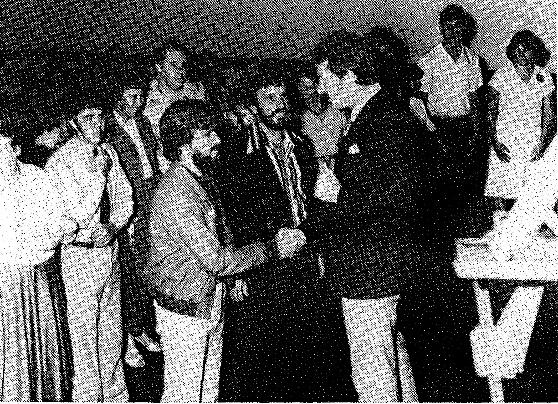
Figure 18. John Lewis at Glad Tidings Tabernacle for the Official Opening of the Activity Centre, 1982. Source: Teen Challenge Inc. (Qld)
There were new activities which were reminders of the early days of the organisation. CareLine, the youth telephone counselling service, opened at the end of 1985. The volunteer counsellors that had completed the CareLine Training Course would ‘man’ these phones. The last years of Ringma era saw a development of the Activity Centre at Glad Tidings Tabernacle at Fortitude Valley. In 1985 a Youth Chapel was conducted each week at the Valley Activity Centre and was a creative outlet for the organisation ‘students.’ Success was renewed and awards were made. Even before becoming Executive Director, Teen Challenge worker Alex Spencer received 1987 Queensland Award for Youth Achievement by the Queensland Day (June) Committee. The new Executive Directors in the late 1980s and in the 1990s, Jean Claude Boulenaz (1985-1989), Alec Spencer (1993-1996), and Alan Le May (1997-2010) made their own particular mark on the organisation. Boulenaz had been the Manager at Primmer Lodge, and, during his governance, the full organisation worked closely with Brisbane City Mission. Under his guidance, the Redcliffe Counselling and Kedesh Male Rehabilitation Centre opened (8 December 1988), at 254 Flinders Parade, Sandgate. After his directorship, he and his partner, Rosa, turned to management work, Claude as Rehabilitation and Regional Director. Alec Spencer had been the Manager at Hebron House, which had been relocated to 15 Frasers Road, Ashgrove. Spencer’s governance was reflected in the development of the Macedonian Missions within the organisation, an evangelical platform. When Alan Le May had joined Teen Challenge around 1993, a great deal of reshaping of the organisation had begun, with a focus on three traditional areas – prevention, treatment, and training, and these main services included street outreach, high school programs, counselling, crisis and transitional housing, rehabilitation, and seminars. The reshaping was corporate. Over the following decades, in line with the global business culture, there were several attempts at re-branding and organisational re-structuring. With this re-structure, Le May brought a better regionalisation for the organisation, beginning with the opening of the Charters Towers rehabilitation centre.
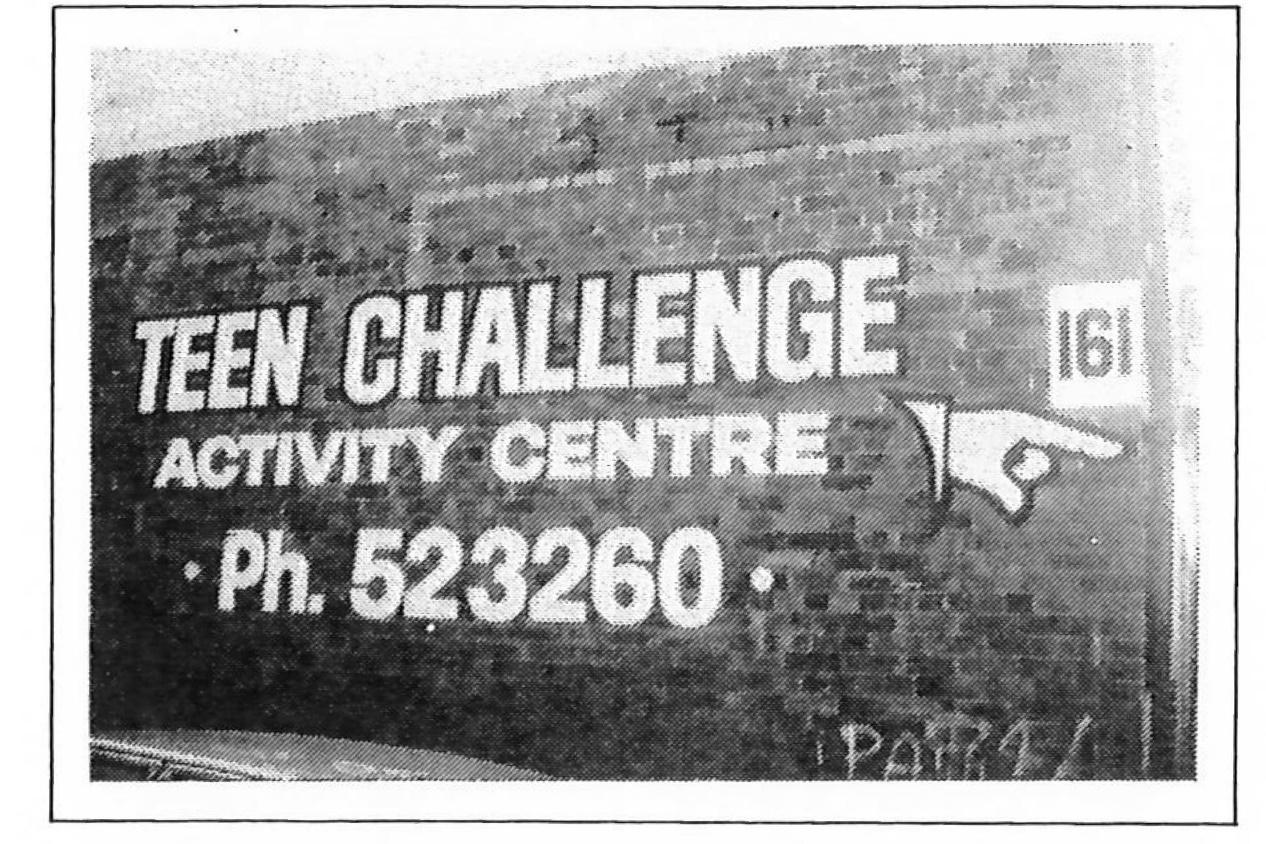
Figure 19. The Valley’s Teen Challenge Activity Centre. Source: Teen Challenge Inc. (Qld)
New Directions in Teen Challenge Inc. and Christian Missions and Social Work, and the 1990s Globalisation.
The Australian organisation always kept the links with the American and global institutions. In May 1987 the links were renewed with the “Success Factors in Christian Rehabilitation & Discipleship Youth Workers Seminar (Saturday 9 May)”, with the speakers, Reg Yake, Executive Director Teen Challenge Rehresburg, and Ray Elder, Public Relations Director, US Teen Challenge Training Centre, held at Brisbane City Mission, Brisbane City. With very negative fallout from the Neo-Liberal globalisation, the Christian mission world had been rocked and a new-radical pathways opened, along with an old continuous roadway. The old was the ‘bread and butter’ of the Teen Challenge organisation – the main services. The new was the greater call for action to alleviate dire poverty and challenge social injustice from corporate structures. Charles Ringma was, again, a central figure. In 1995 he was appointed Professor of Theology and Mission at Asian Theological Seminary, Metro Manila, and Charles and Rita Ringma worked in the Servants to Asia’s Urban Poor’s local retreat house. In 2000 Charles would be appointed an international elder for the global mission, Servants to Asia’s Urban Poor. Ringma’s new professional work was the major education for the renewed Christian mission. He was the recognisable figure for the field across the Asia-Pacific.
The global would have its local impact. In February 1999 a review of Teen Challenge’s branch operation program was conducted. It was found that it was no longer feasible or manageable for the outreach branch program to continue. Teen Challenge, therefore, rolled back its more hands-on involvement with churches, and instead created a youth outreach accreditation program. Other services were also rolled back.
A New Century of Teen Challenge Inc.
The rollbacks were also due to the vagaries of funding from churches. Some churched communities reacted unkindly to the rethink in Christian missions, locals trapped in the narrow and conservative conceptions of what was political and what was social, and too often voiced with negative semantics. Other communities were able to rise to the challenge. Thus, funding also was renewed, helped both by corporate re-planning and the philosophical-theological revaluations. The first achievement with the new funding was the opening of Teen Challenge New Life Centre, Toowoomba, in 2001. The purchase of the site had been made possible due to the generosity of Clive Berghoffer. Toowoomba became the new home for the rehabilitation work, supplement with the facility in Brisbane.
The heavy work delivered around two focuses of emergency accommodation and rehabilitation. In 2008 Hebron House changed to New Hope House, and Sean Solien became team leader. In the same the development of the Women’s Centre got underway, with design approvals from local Council finalised. Construction of the New Life Women’s Centre commenced in the following year. The Global Financial Crisis, though, caused great impact on donations which put the organisation under significant pressure. Several staff redundancies were a direct result. The construction of the Women’s Centre continued, but completion date was pushed back. Meanwhile the program was restructured with a new nine-week re-entry phase for clients, located in Cedar Creek, Samford. This re-entry involved a combination of work, financial responsibility, learning new skills (building and landscaping) and re-engaging back into their community on weekends. However, this program was terminated due to council restrictions, and the re-entry phase was relocated back to the New Life Centre, Toowoomba. Craig Watson was appointed Manager of the New Life Centre, and Hebron House fell under the leadership of Alanna Fraser as becoming a part of the new Outreach division.
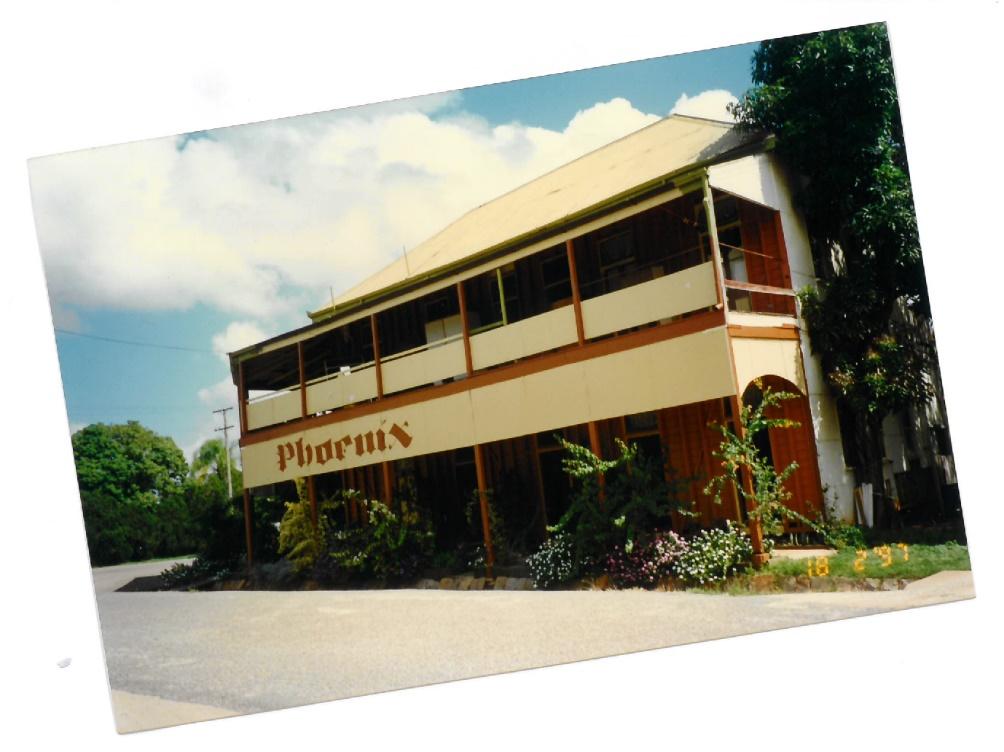
Figure 20. Charters Towers Drug Rehabilitation Home. Source: Teen Challenge Inc. (Qld)
The major restructure for the organisation came in 2002, with the establishment of Teen Challenge Care (Qld) Ltd and the establishment of Teen Challenge International (Queensland) Inc. The change was as result of operational requirements from new charity and corporate Queensland legislation. Direct funding to the organisation as a charity had to be kept as a separate accounting to funding available to the corporate entity. It removed some of the risk for financial corruption. Examples of the former was the Tour De Freedom Bike Ride, and the community workday, first implemented in 2007. An example of the latter was the Teen Triple P Positive Program (began 2009) delivered by Outreach Services in partnership with the state Department of Communities.
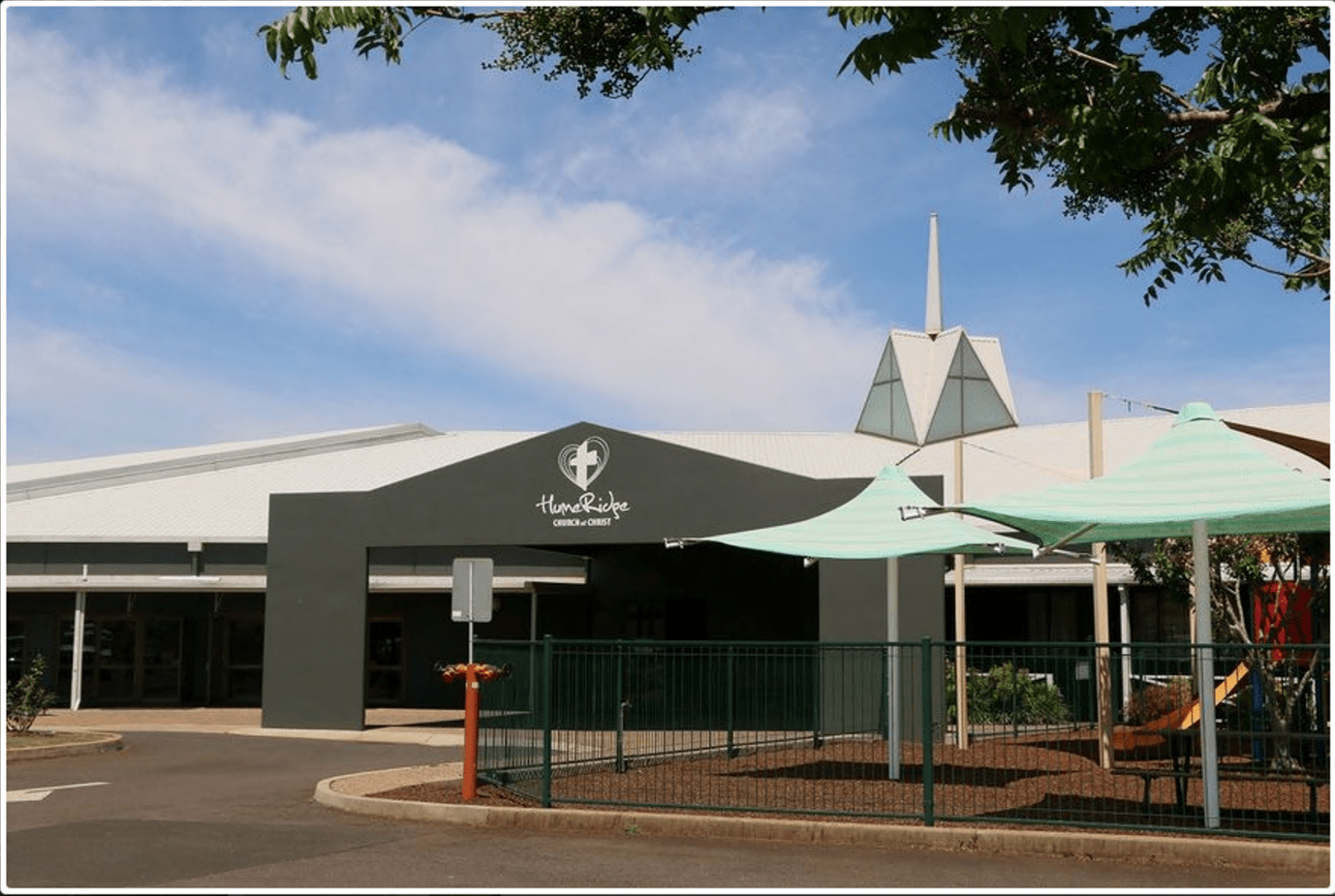
Figure 21. Hume Ridge Church, Toowoomba. Source: Teen Challenge Inc. (Qld)
The Recent Decade of Teen Challenge Inc.
In 2009 Teen Challenge began looking at appointing a new Executive Director to replace Alan Le May, who finished his time the following year. The year, 2010, was when the global founder, David Wilkerson, passed away, and Joanne Hobbs was appointed as the new Executive Director. The decade began with the operational opening (10 November 2011) of the New Life Women’s Centre, with two full time staff, a team of volunteers, and two clients. Jo formally began her role in April 2011. Other staff members joined the organisation in a new chapter. Christine Richardson started as the Family Support Worker. The official opening ceremony of the New Life Women’s Centre came in March 2012, unveiled by Mr Kerry Shine MP.
In 2013 the Teen Challenge QLD (TCQ) celebrated eight years as a Registered Training Org (RTO) and continues to offer Cert IV’s in Alcohol and Other Drugs, Mental Health, and Youth Work. The CA. A Cert IV in Pastoral Care had also been added to the Training Services. In-service staff and volunteers were added to the organisation every two months. By 2015 training opportunities were rolled back, due to the decision not re-register for RTO (training registration), as the compliance requirements became increasingly complicated, and therefore not feasible to continue. The Cert IV in Youth Work or Ministry kept as an option for approved interns needed for the program completion.
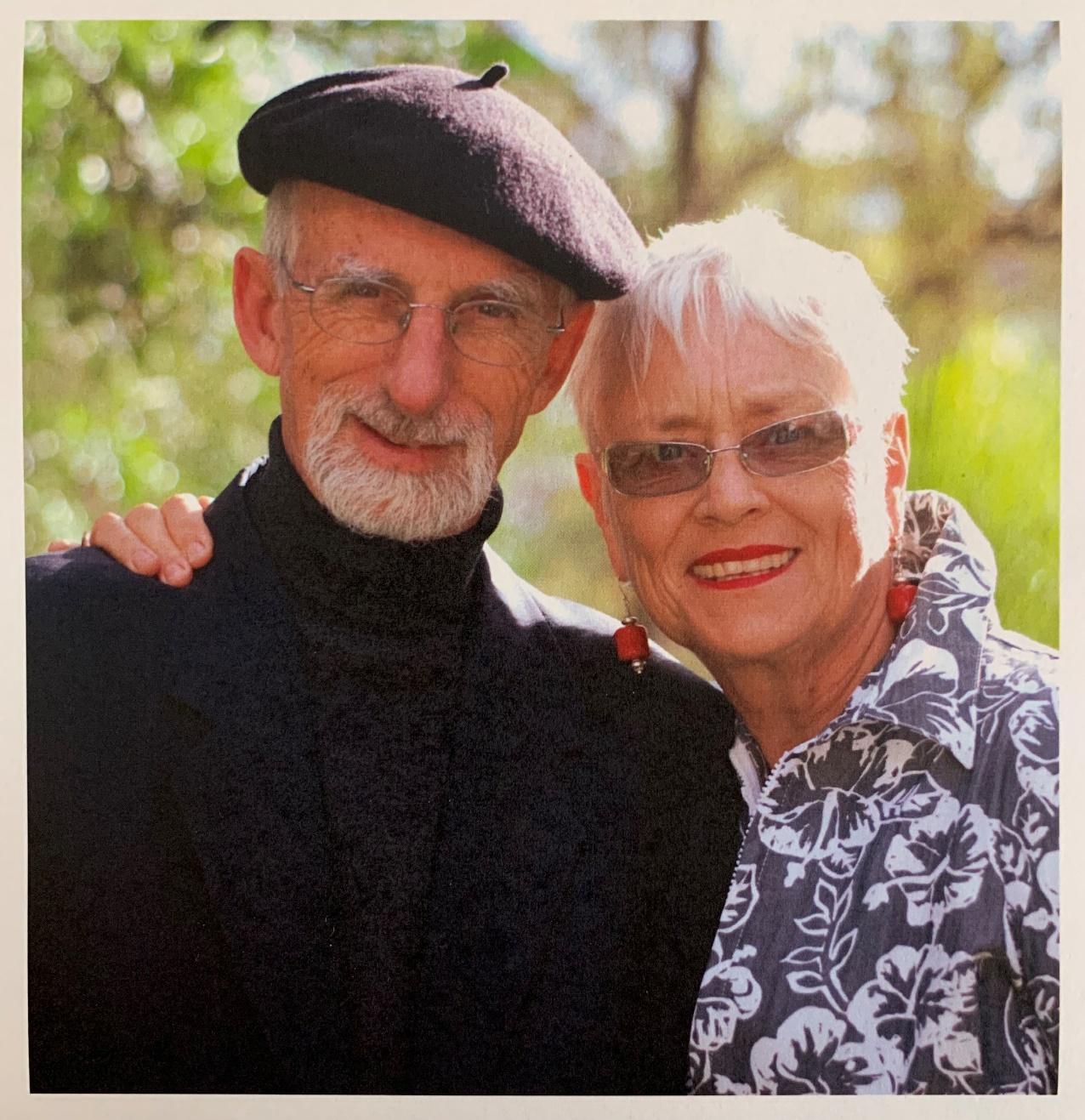
Figure 22. Charles and Rita Ringma Today. Source: Teen Challenge Inc. (Qld)
In these years the board had spent time strategic planning with Duncan Brown in order to accommodate TCQ’s purpose and direction. It would, unfortunately, see a decrease in Government grants. Alternative funding was sought. In 2015 the family sponsorships of students began. The Elite Athletes (five dedicated businessmen) raised over $100,000 for TCQ by hosting two fundraising dinners. Other fundraising events included, the Gala Dinner, the Toowoomba Garage Sale, other charity dinners, Ladies High Tea and more. This helped to fund new services such as the Life Recovery Day Program and the Arrowsmith educative program ‘Empowering Lives’ for children and adults.
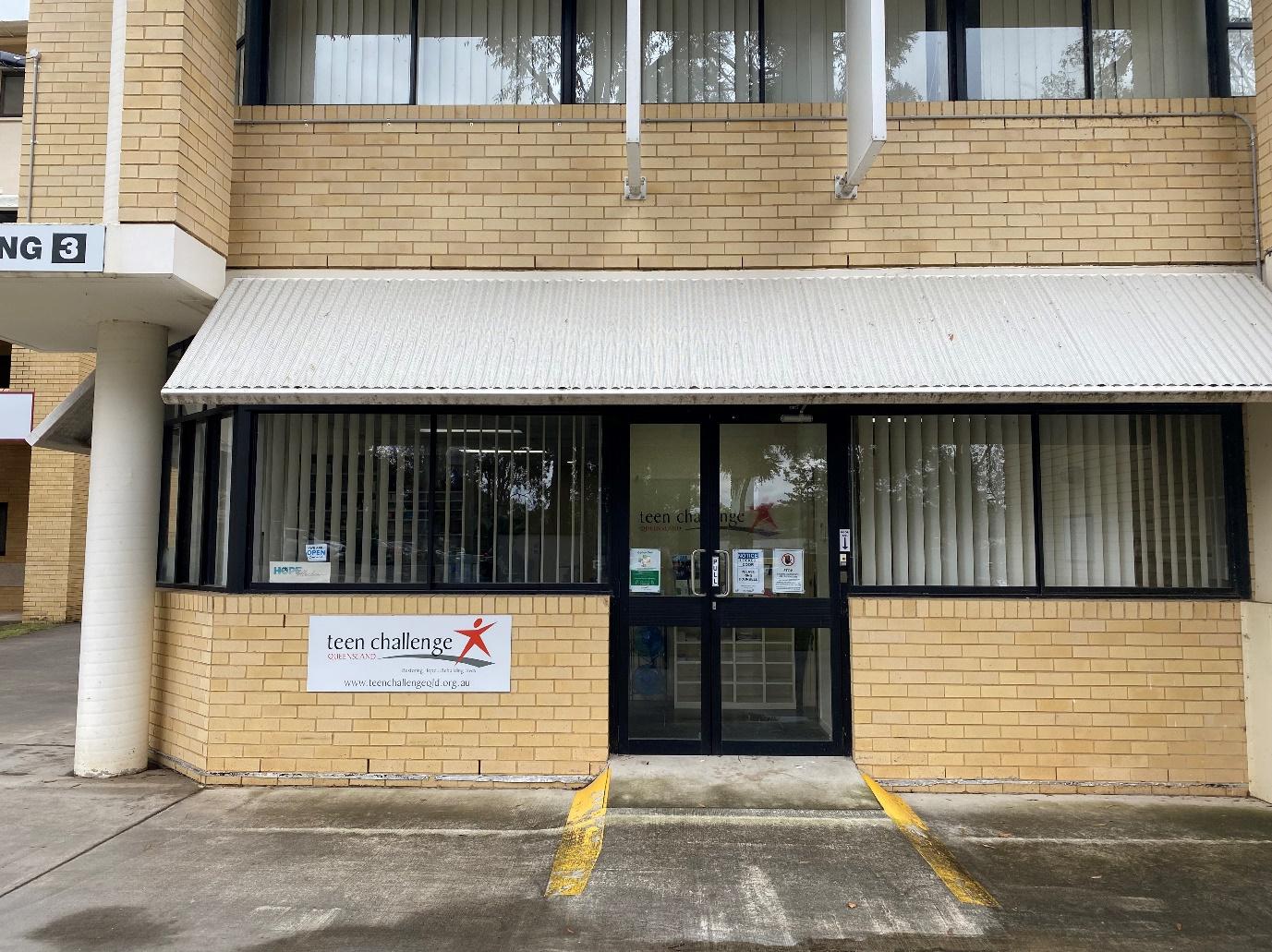
Over the years the offices of Teen Challenge Inc. shifted from Bardon to Mount Gravatt and returned to South Brisbane. The Corporate Office shifted again from South Brisbane to Gaythorne in January 2016. Other facilities have also been established in recent years. In 2020 the Hope Collection Shop was launched. It has been three years since the 60-year anniversary (2018) of the global Teen Challenge phenomenon. During great change the Australian-Queensland story has remarkably proven the worth of a compassionate and dedicated organisation, a strongly related network of many persons.


